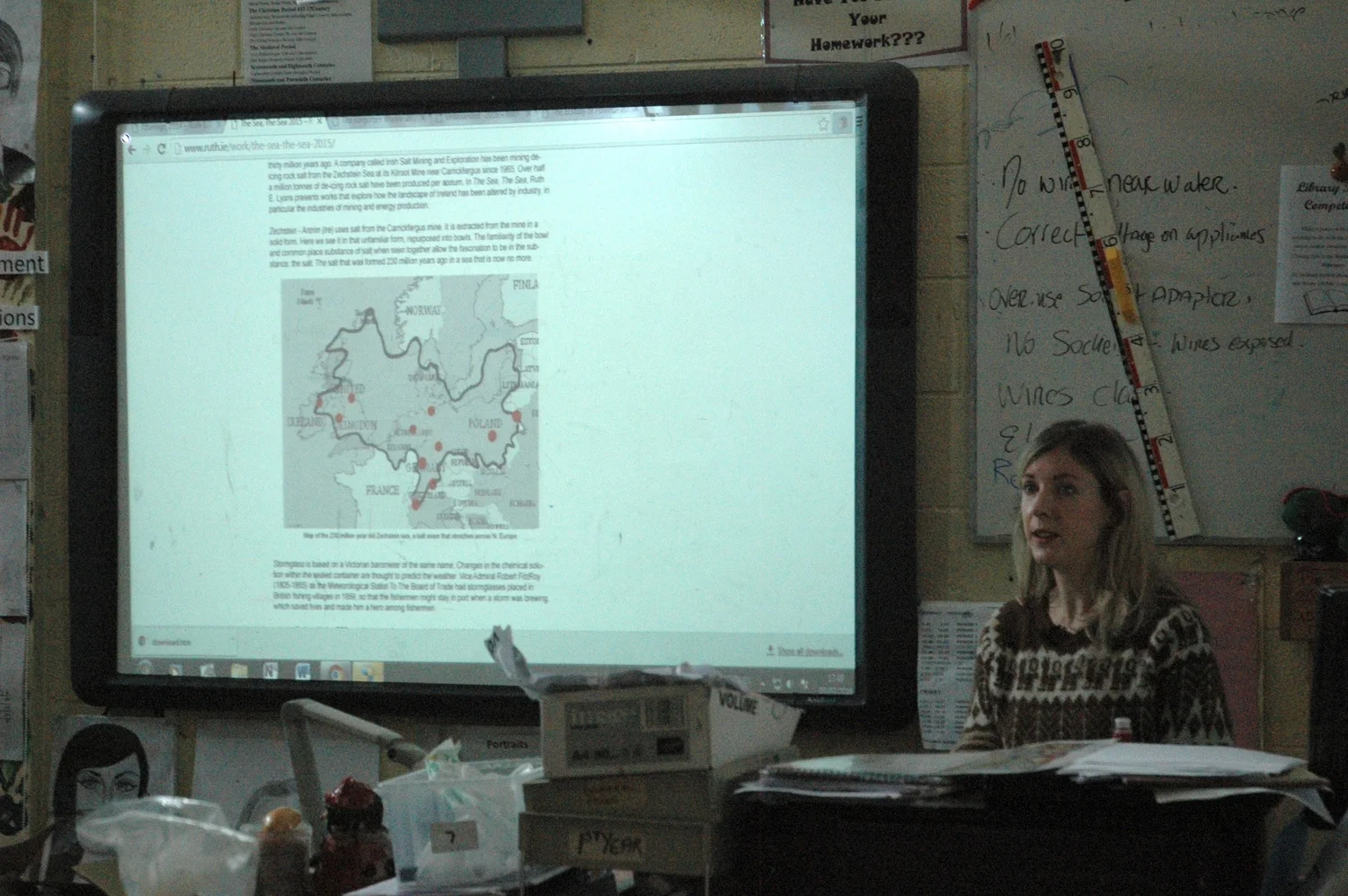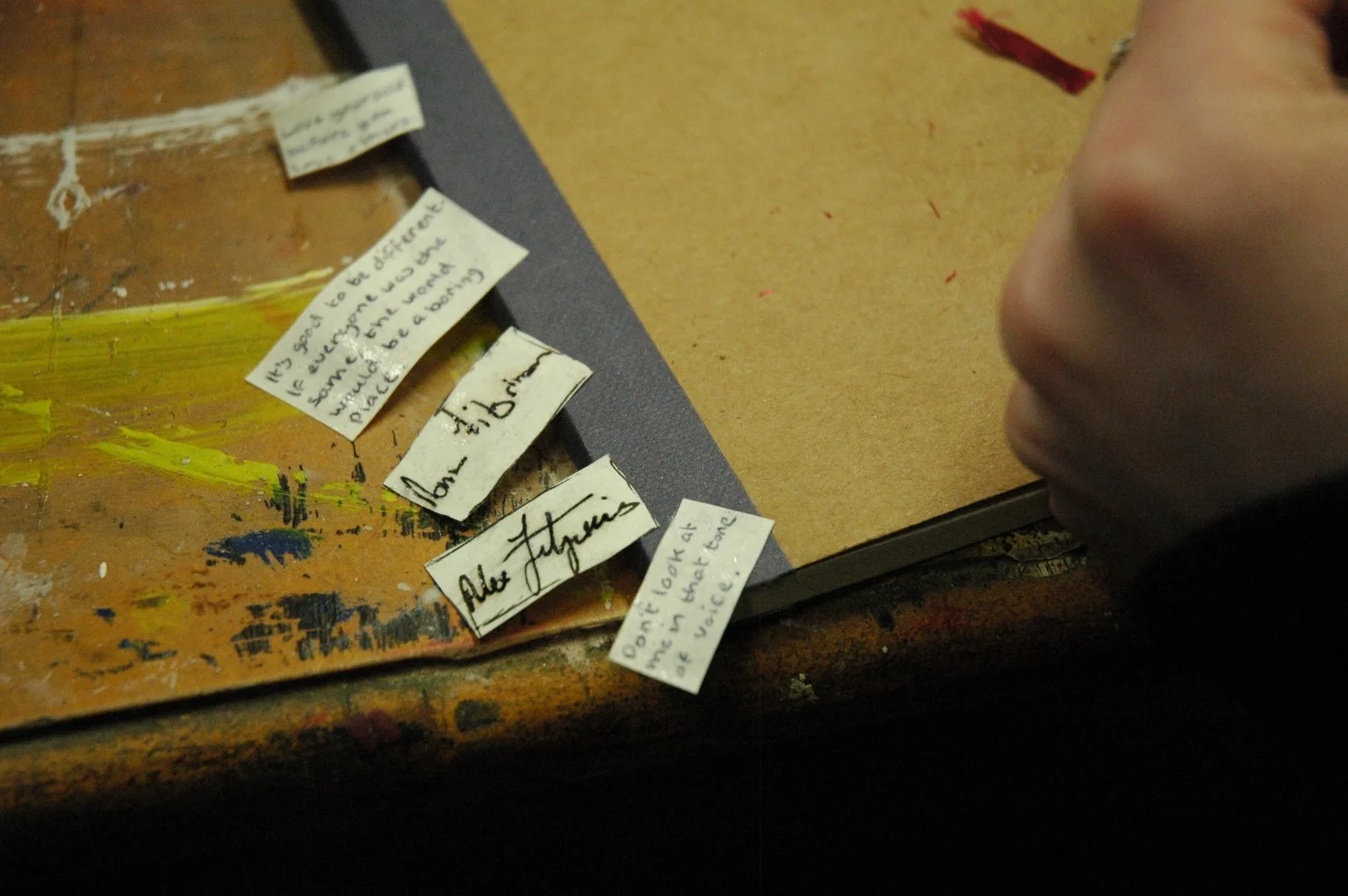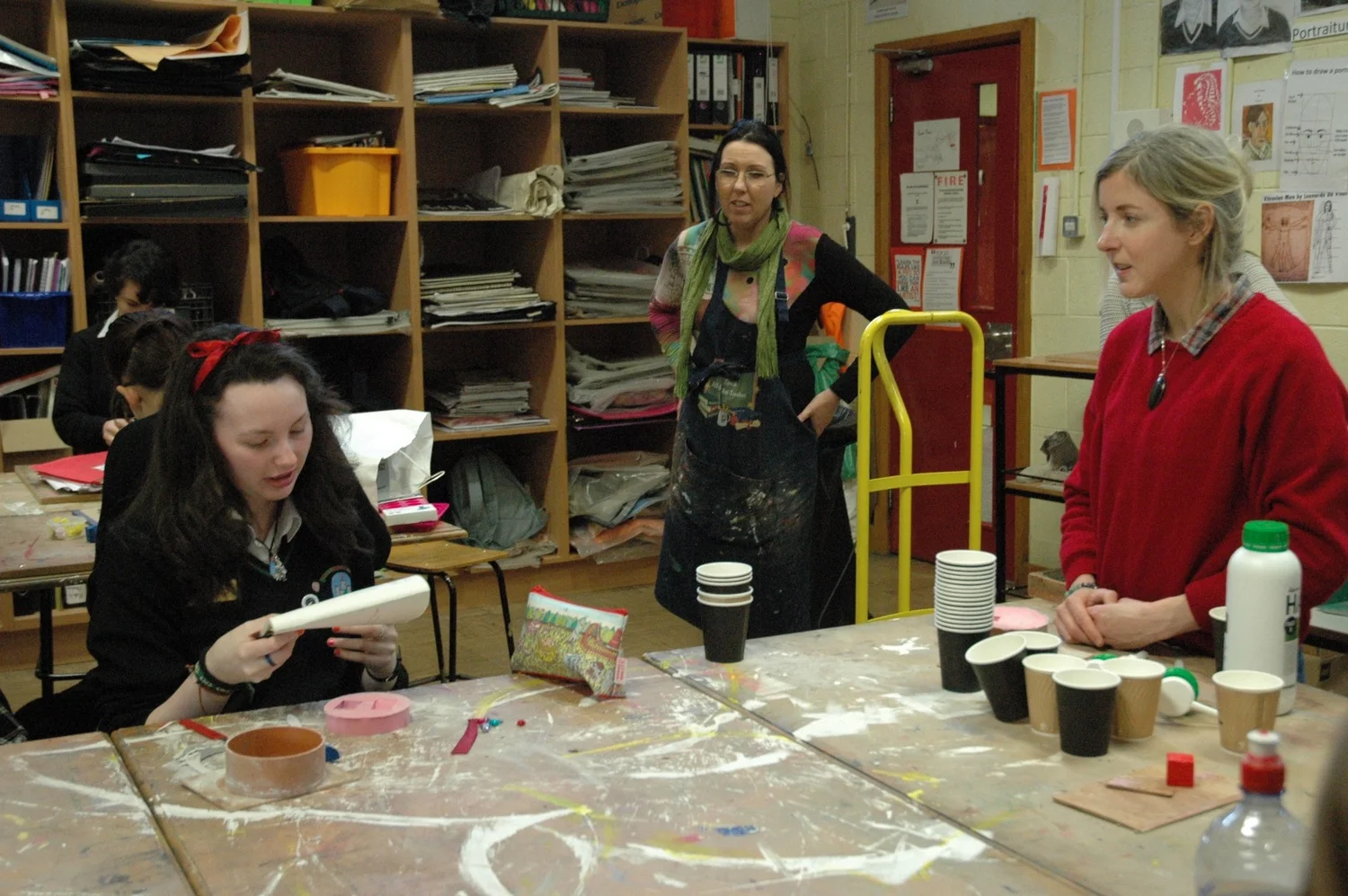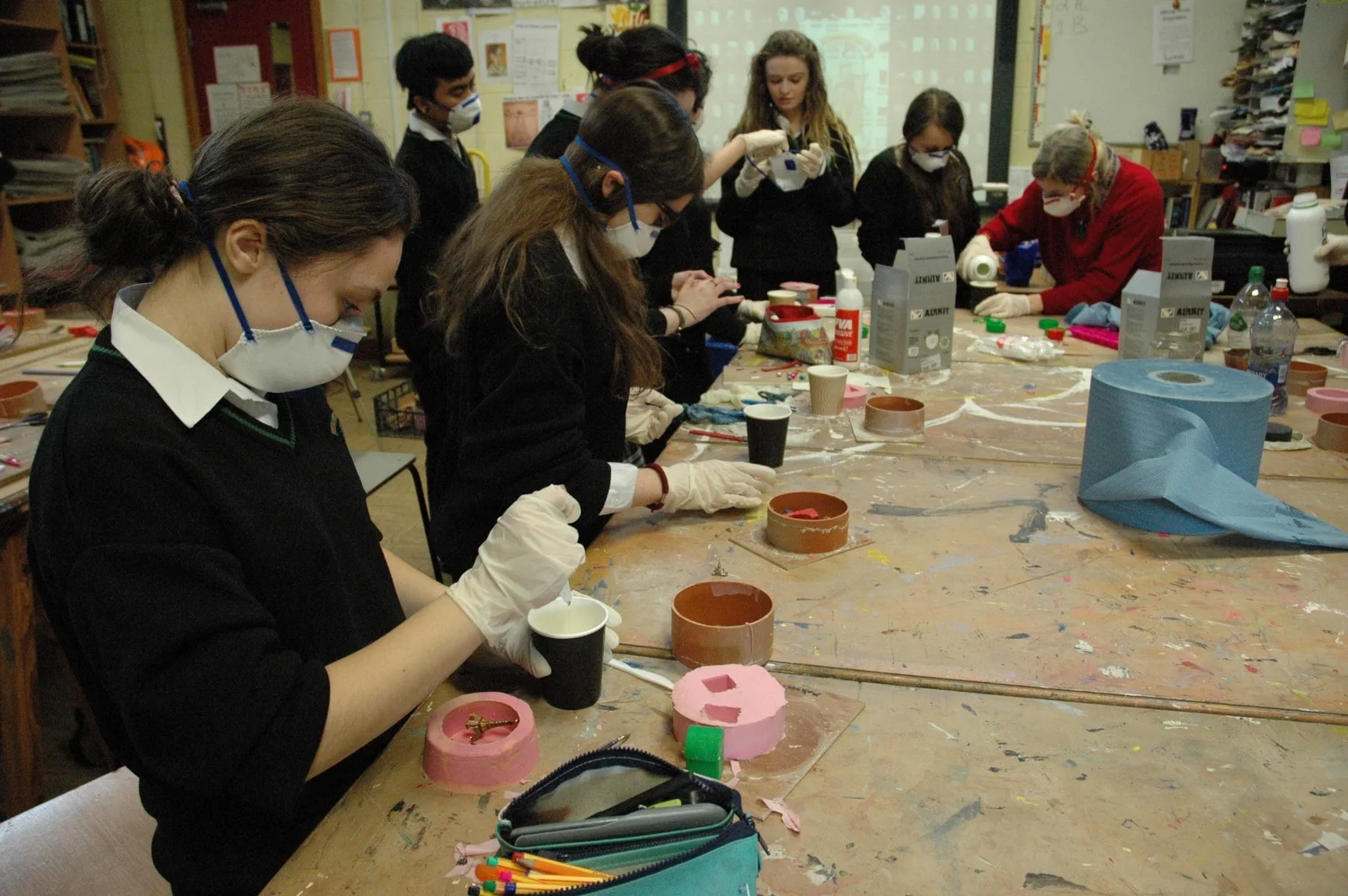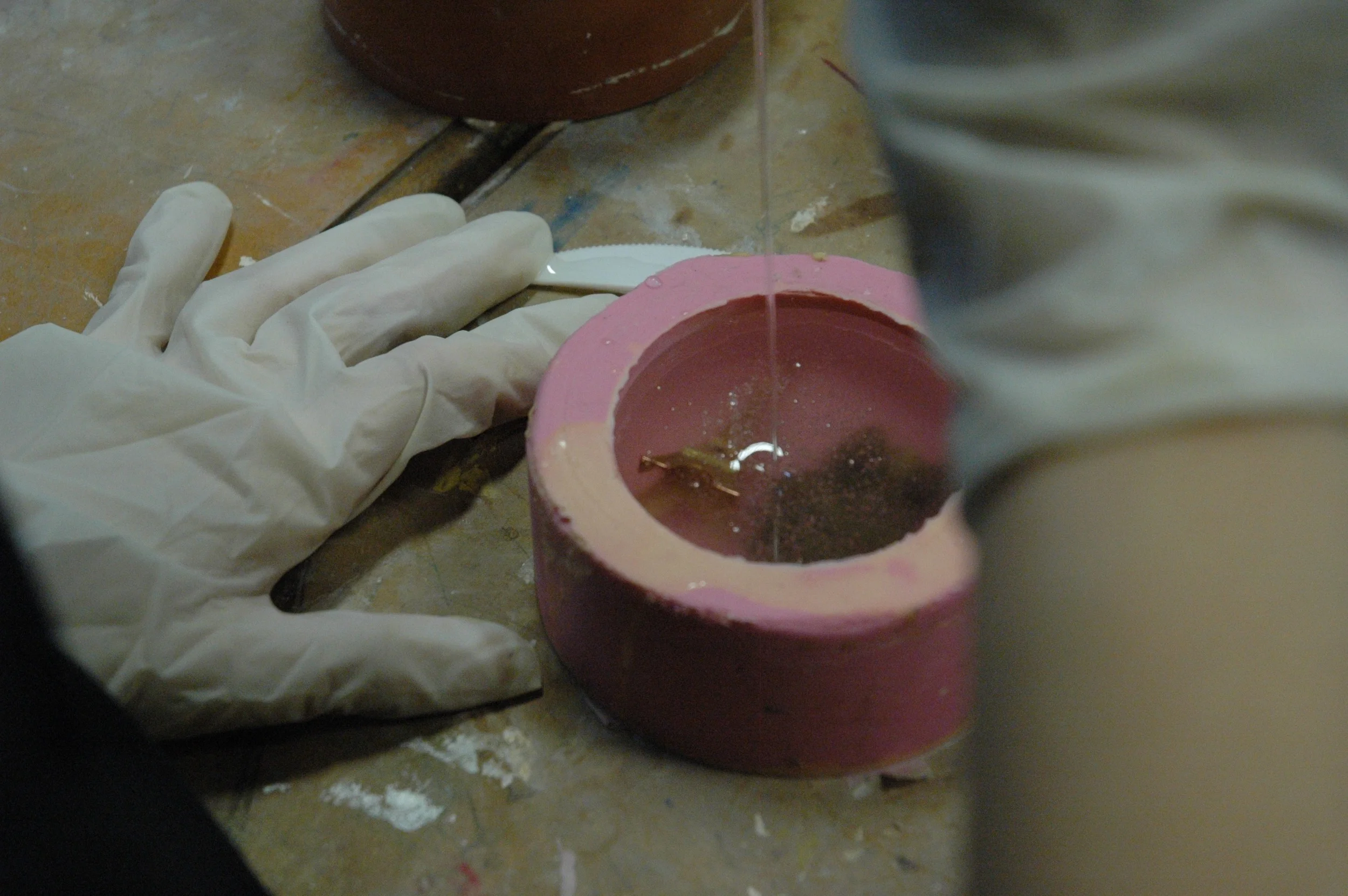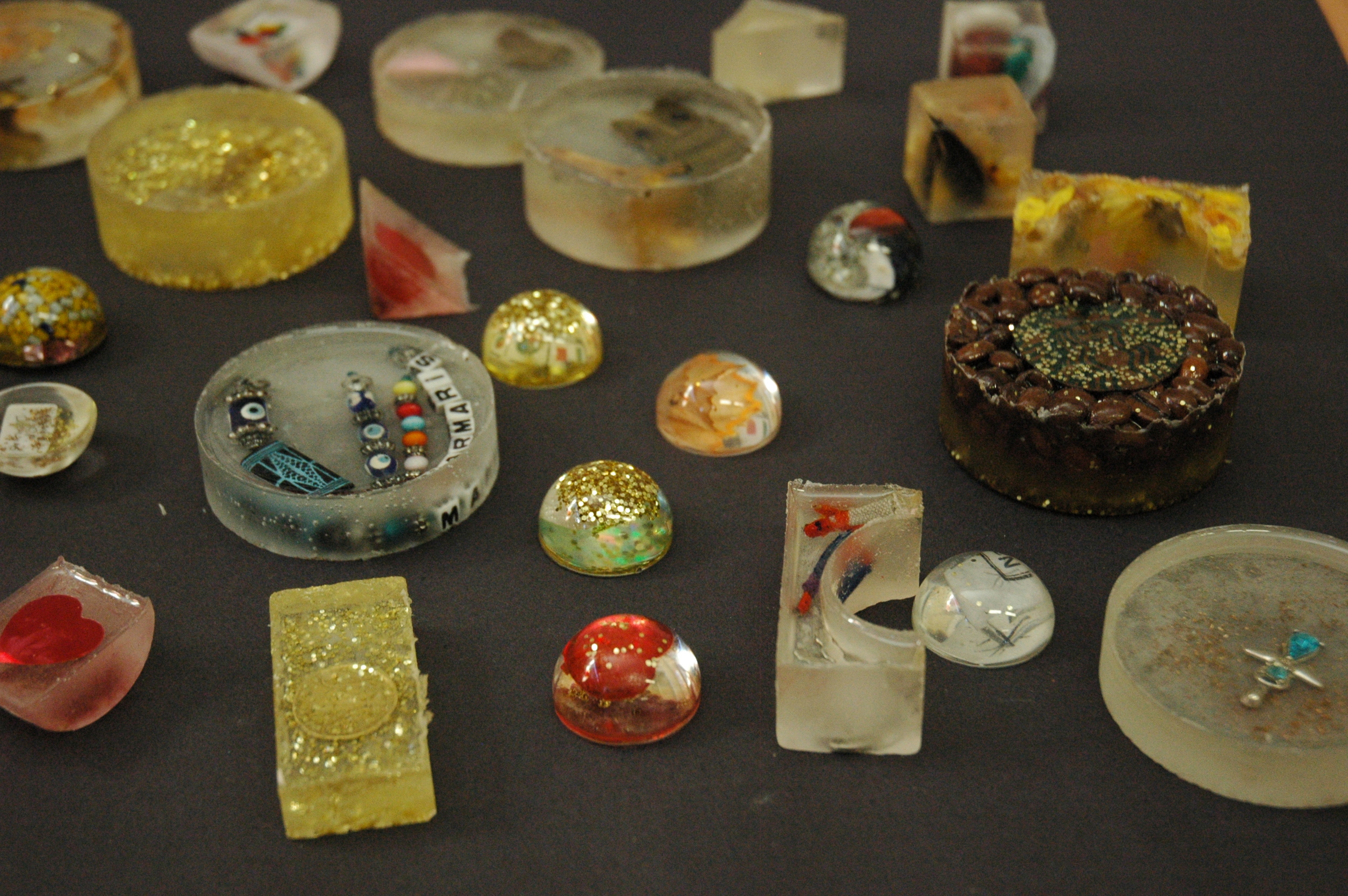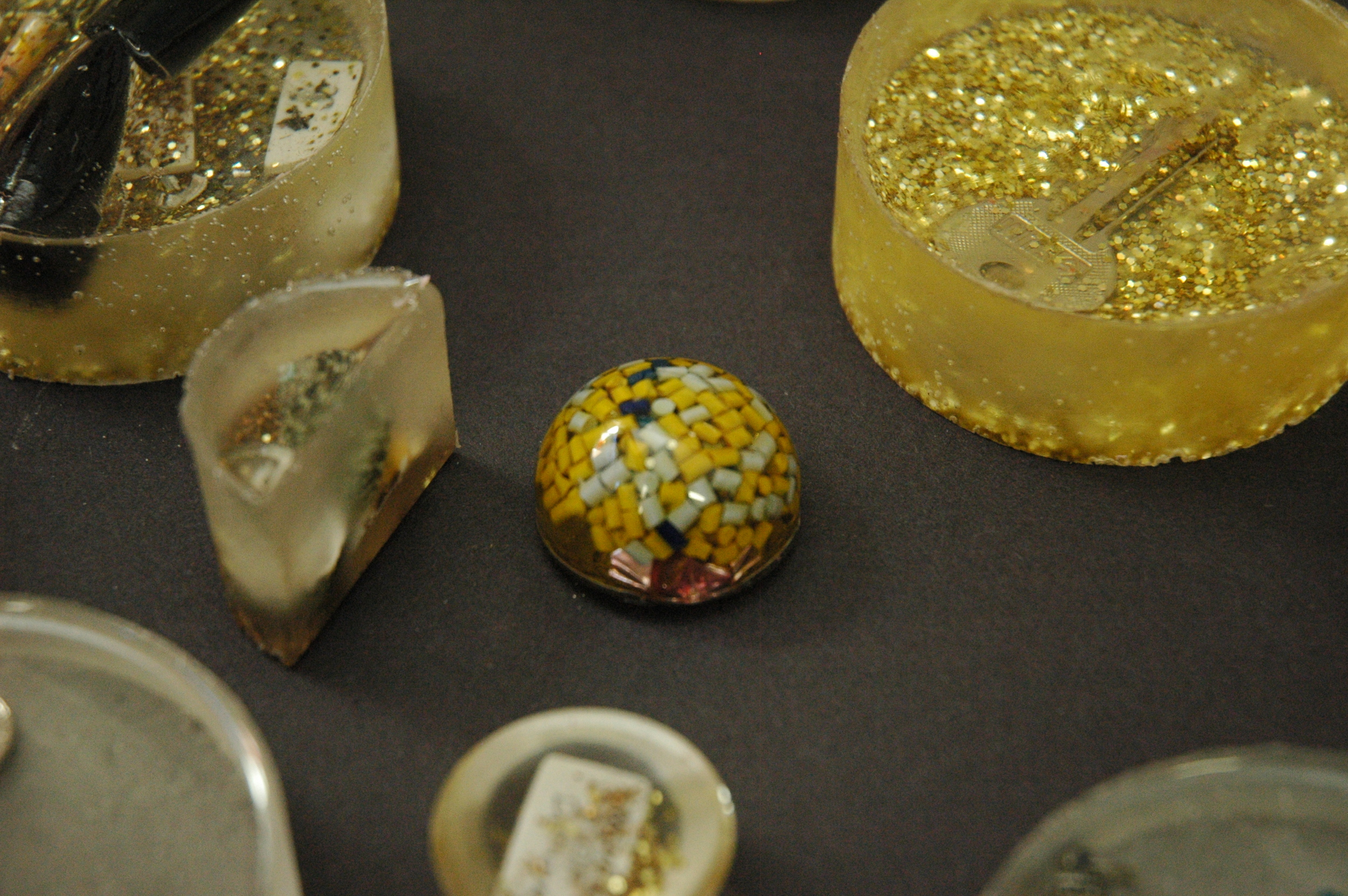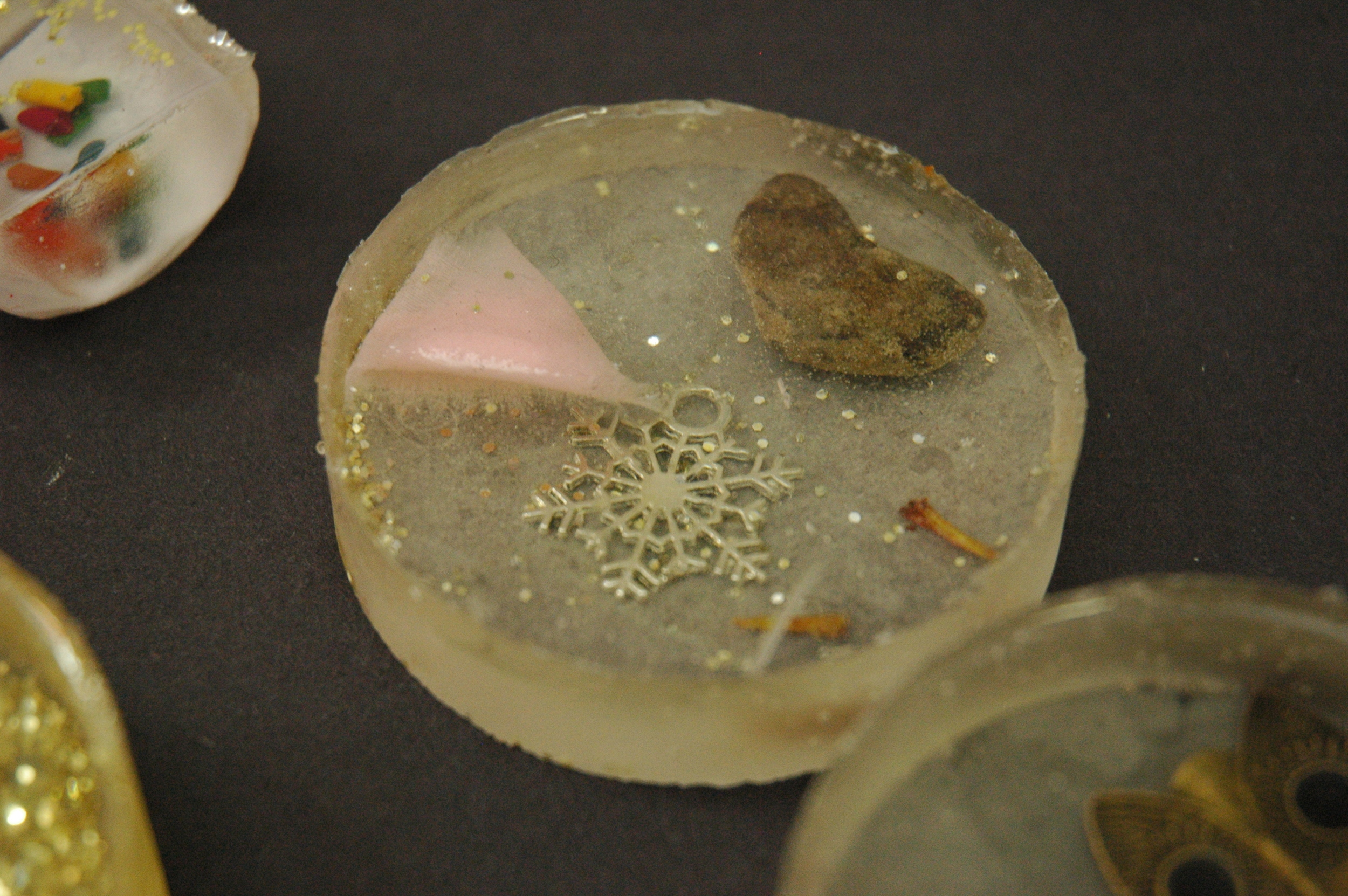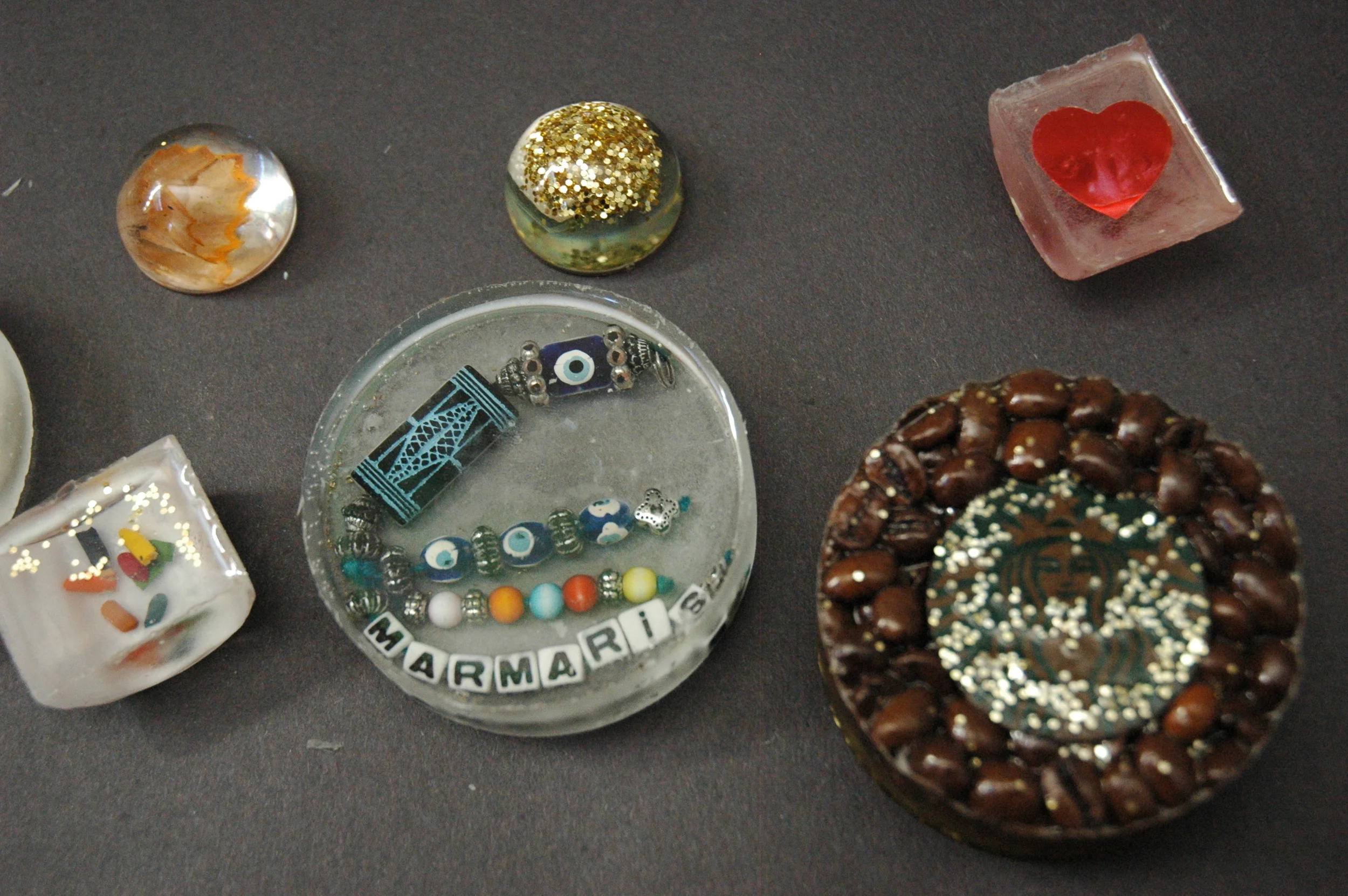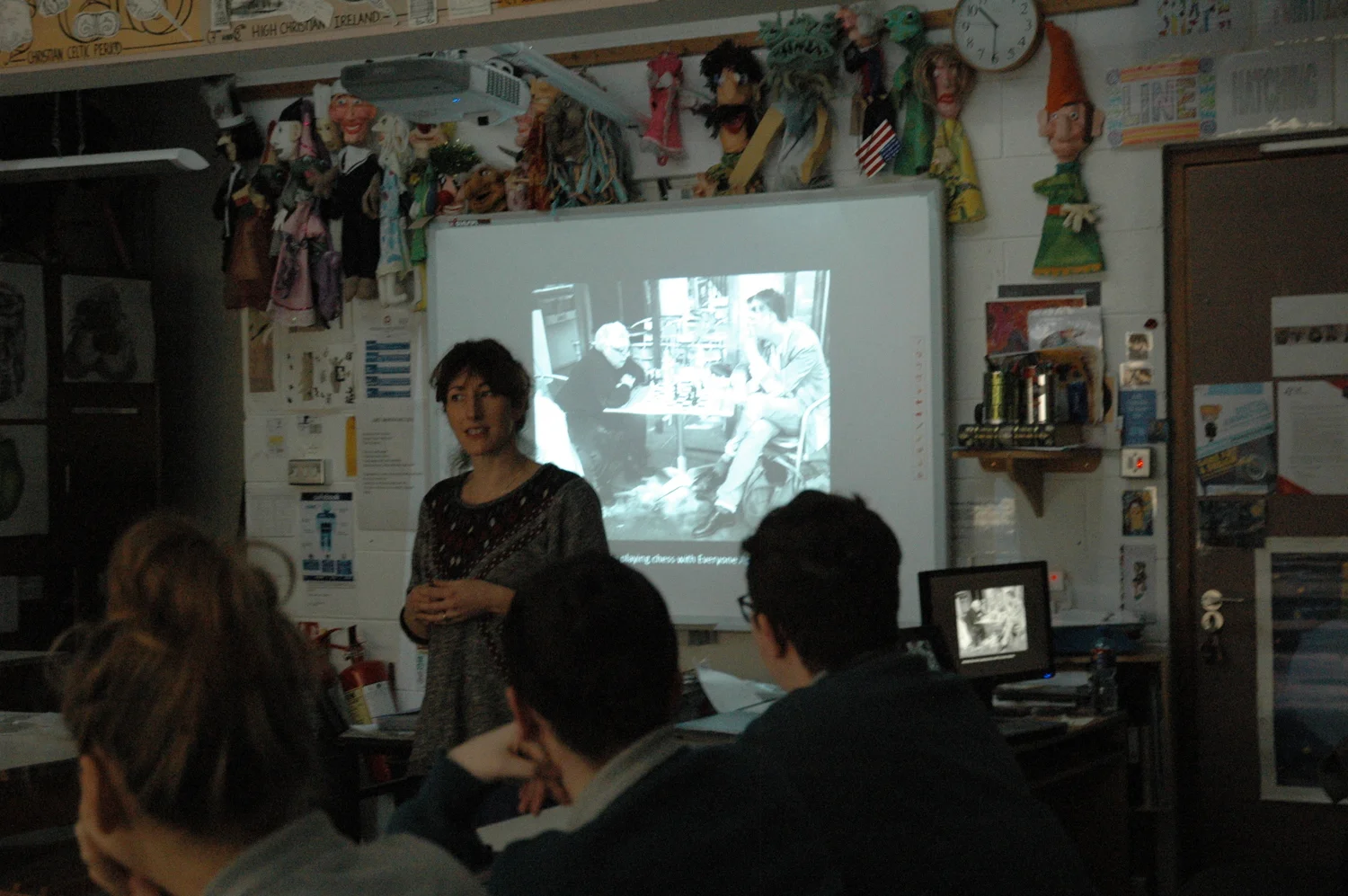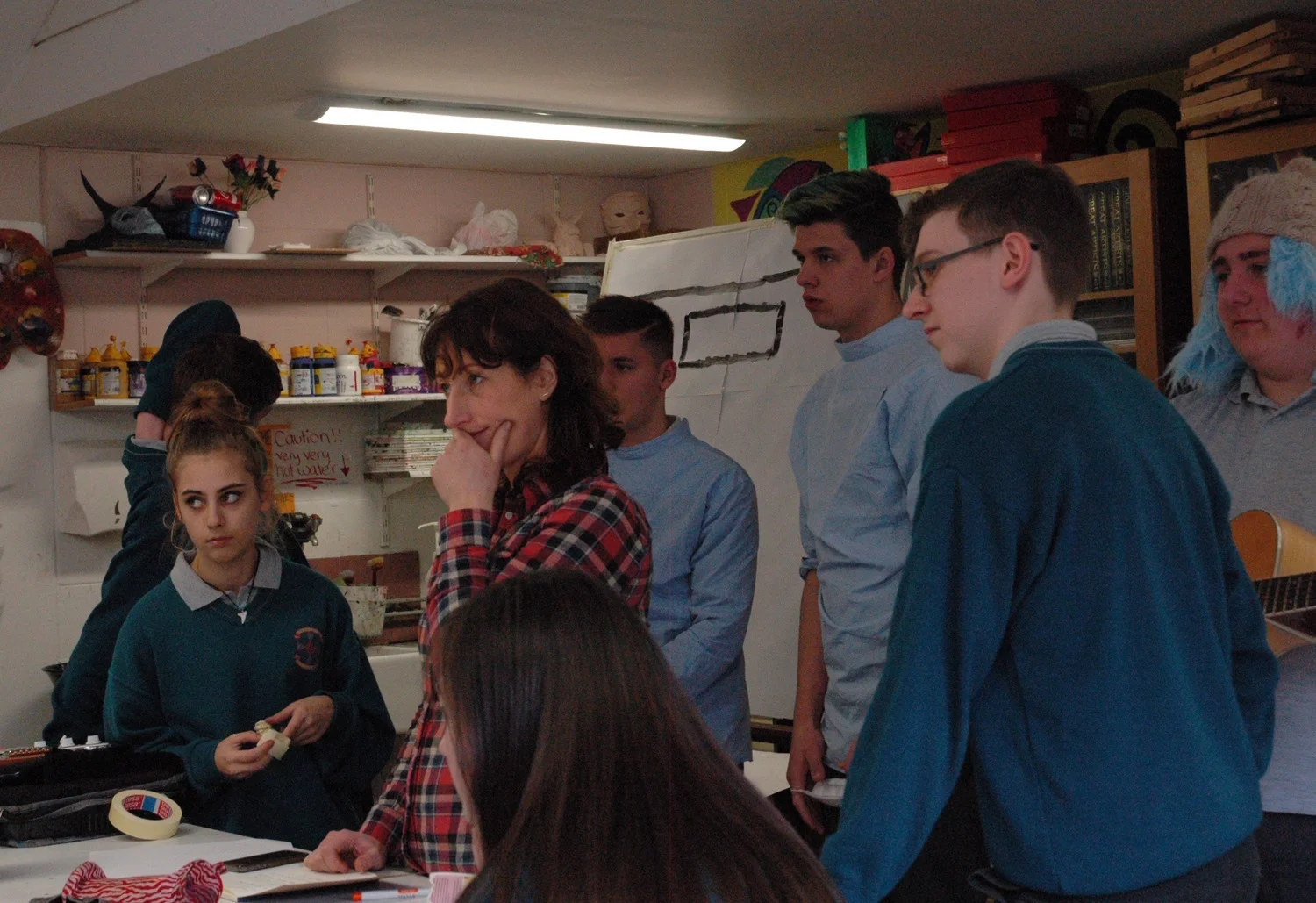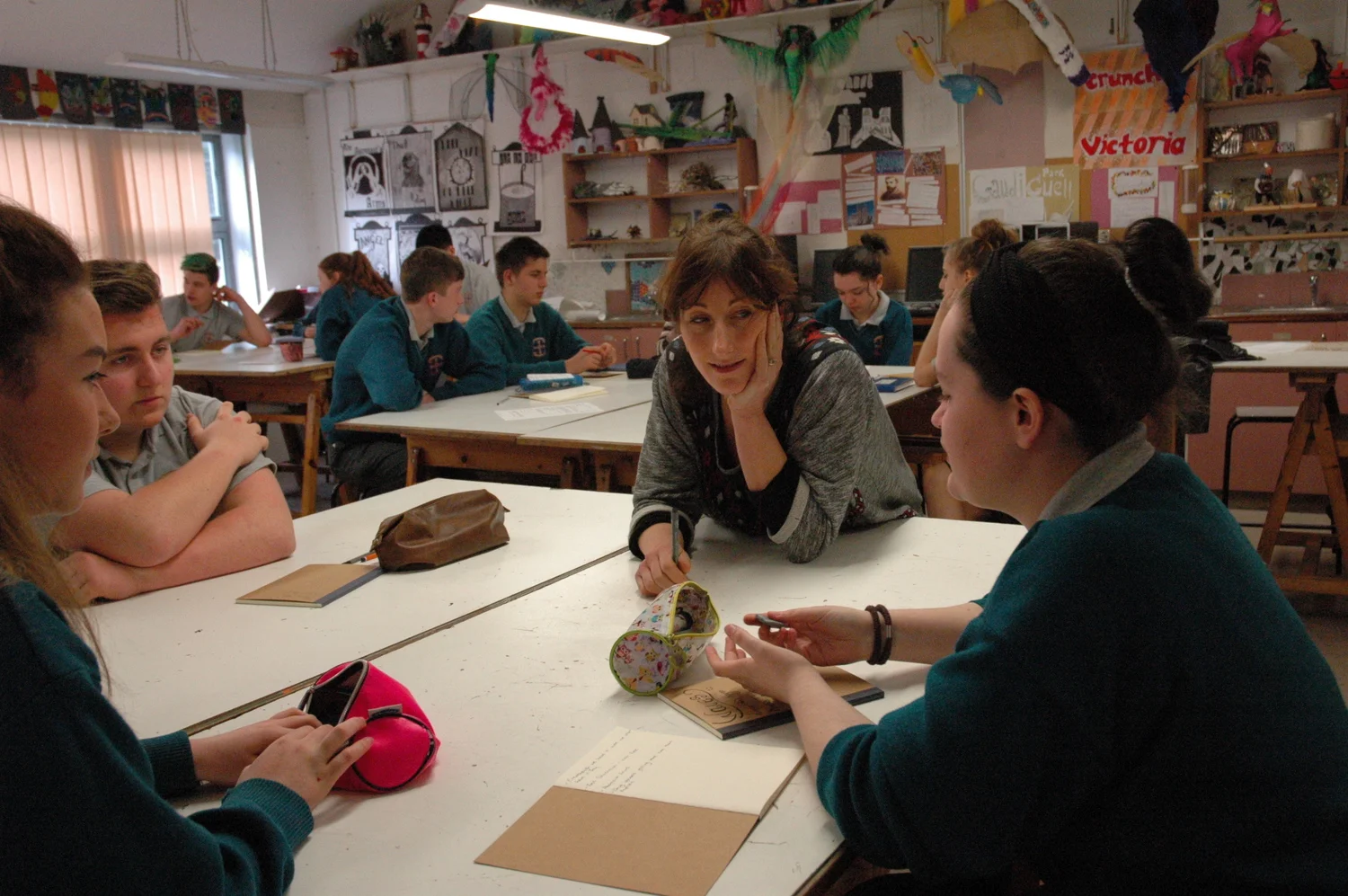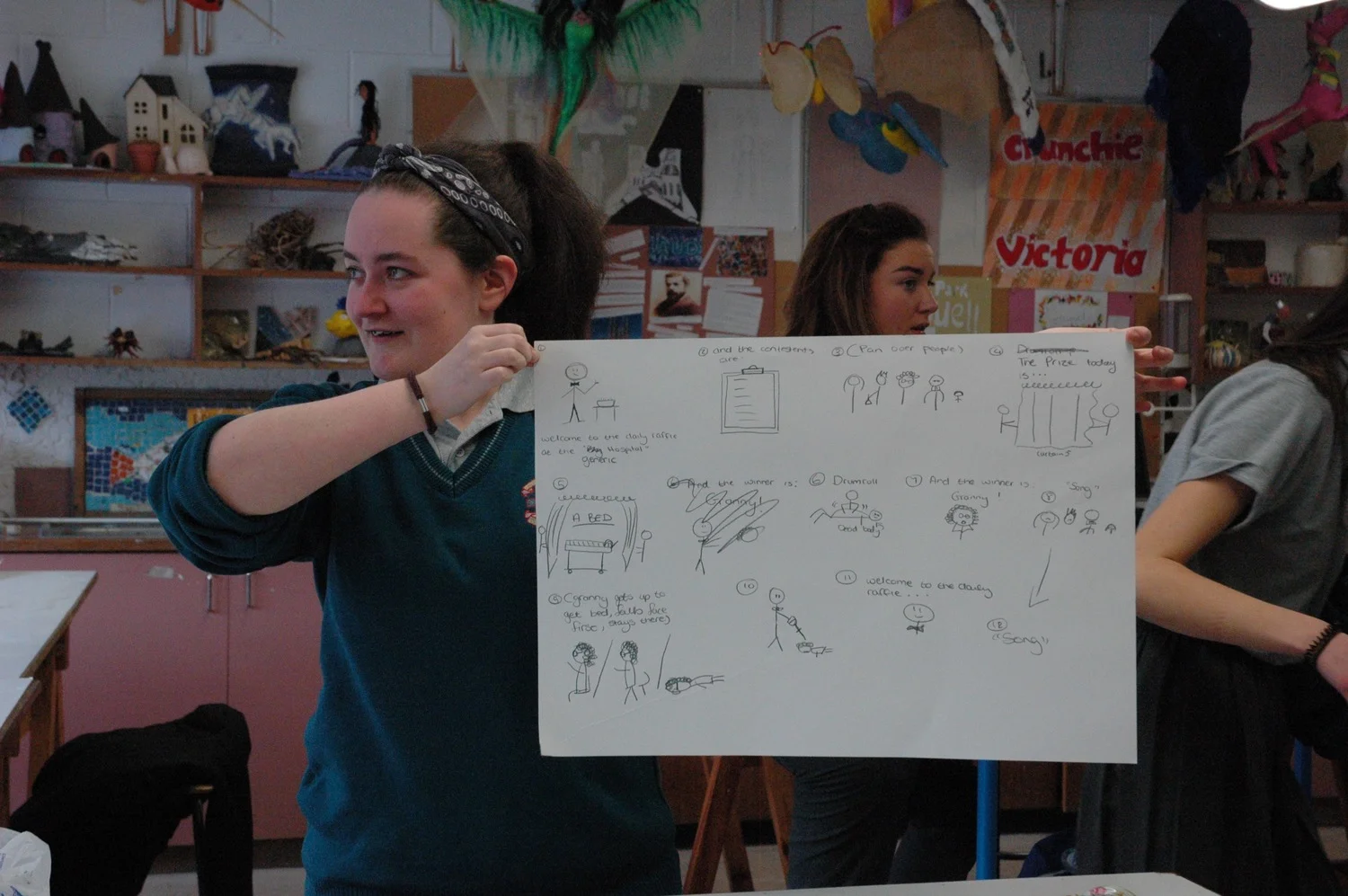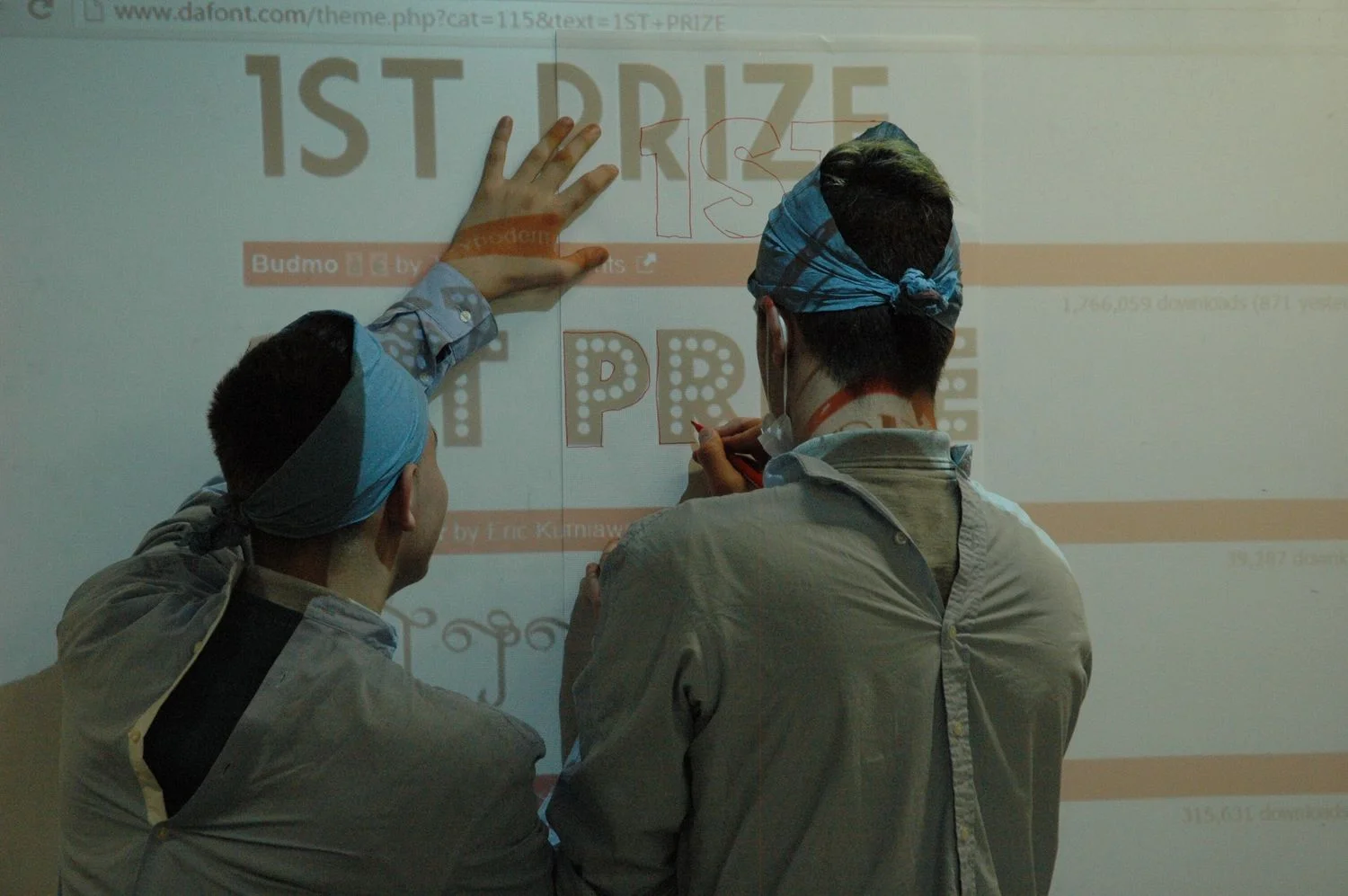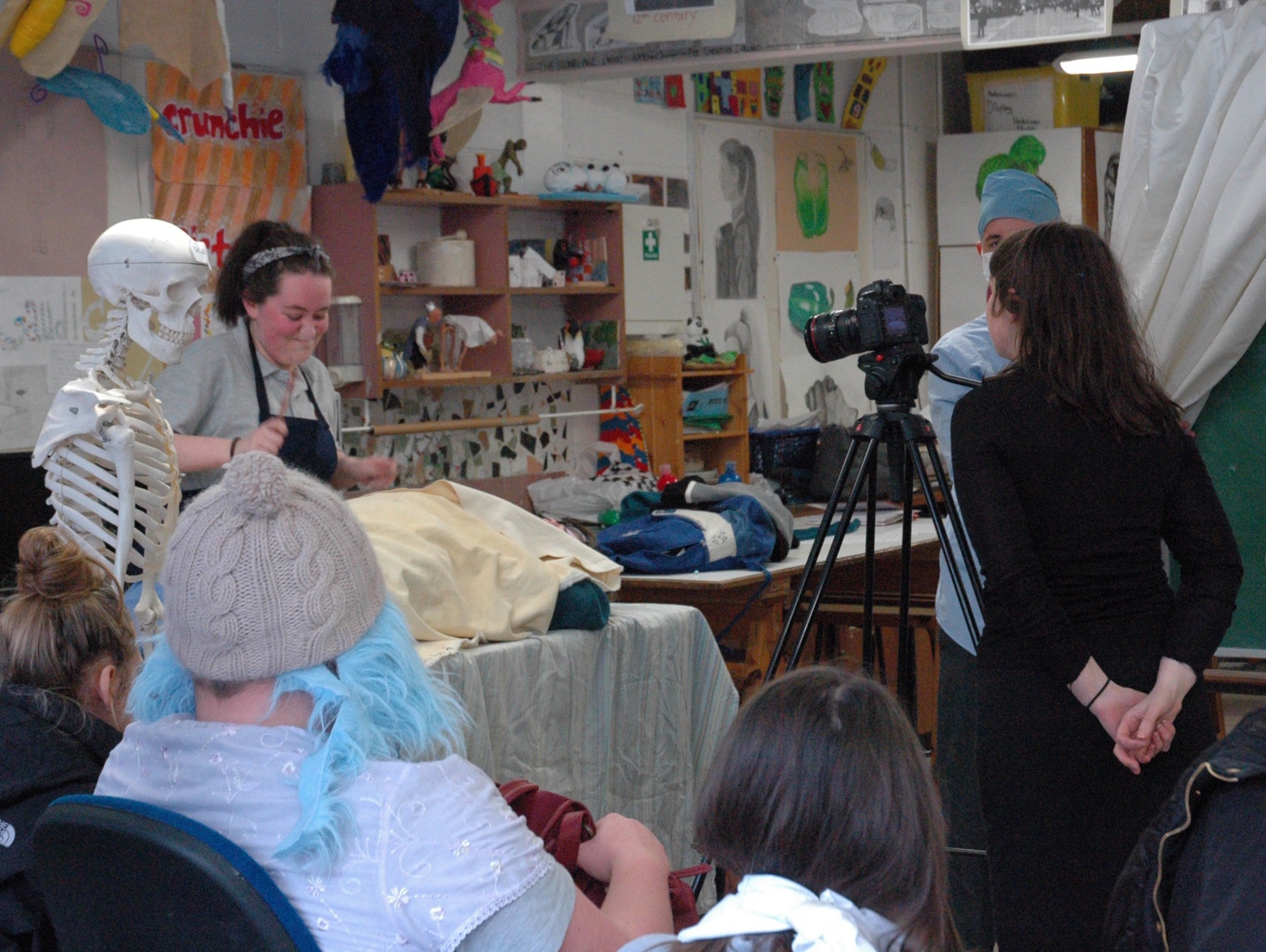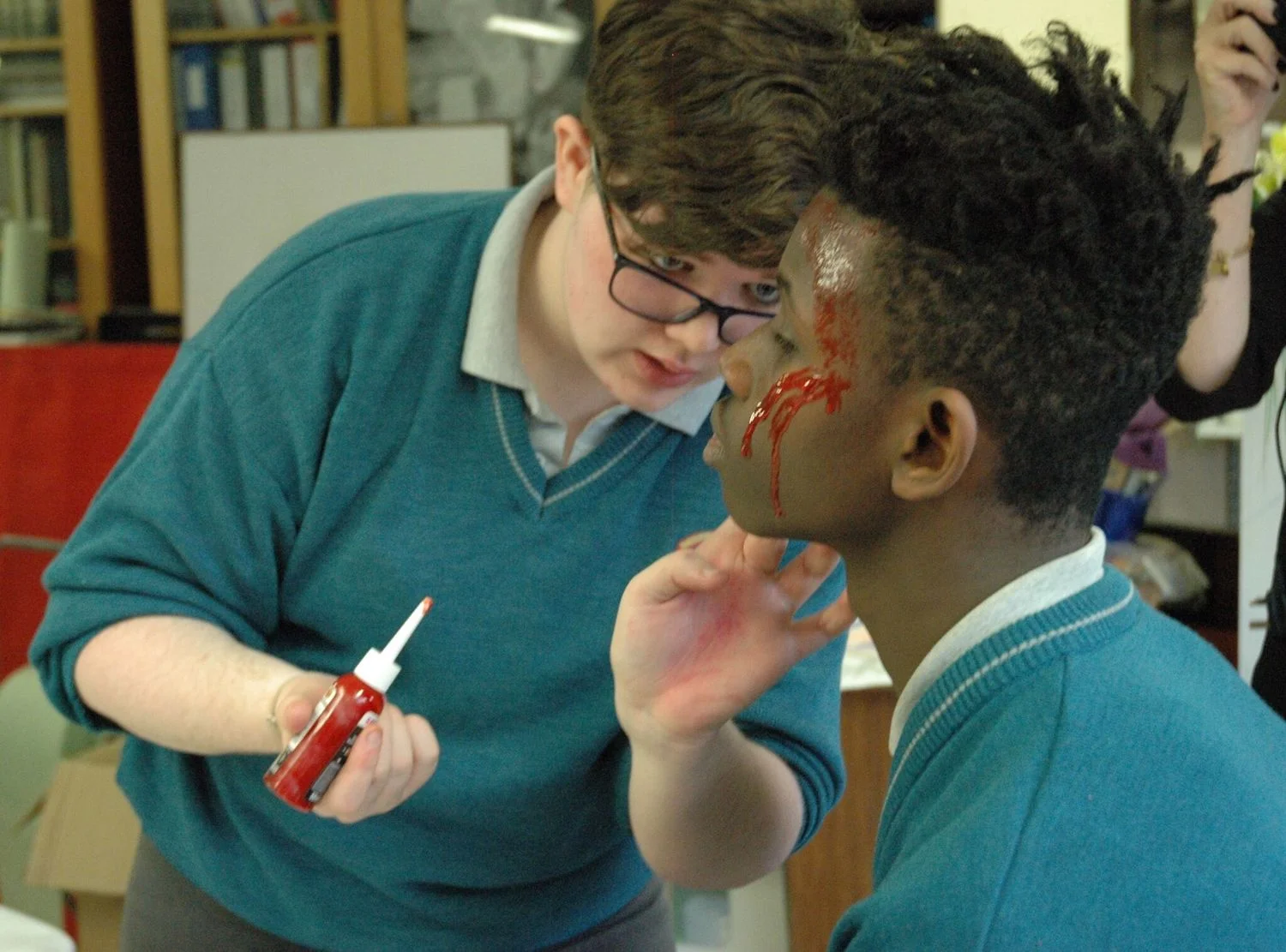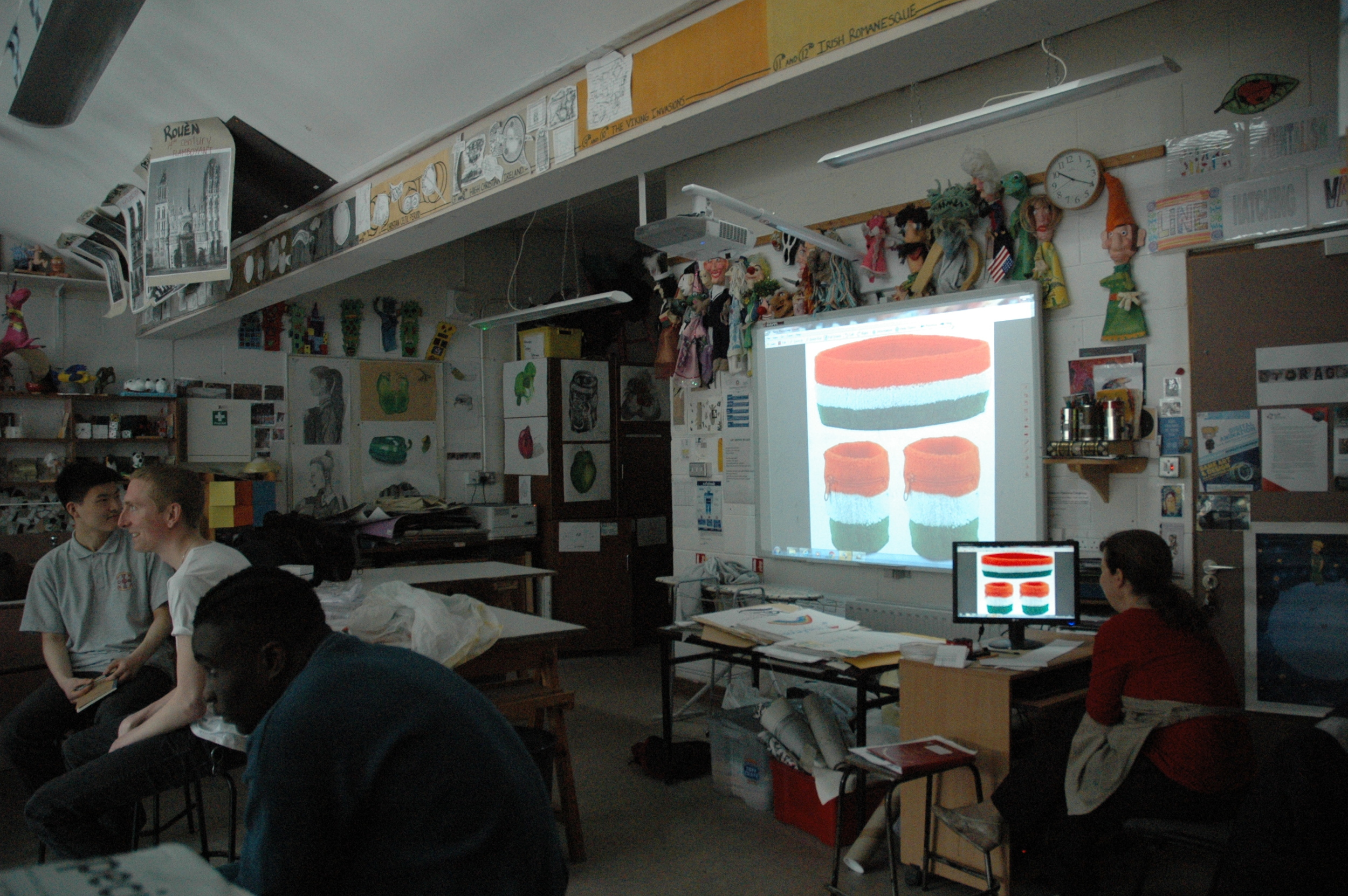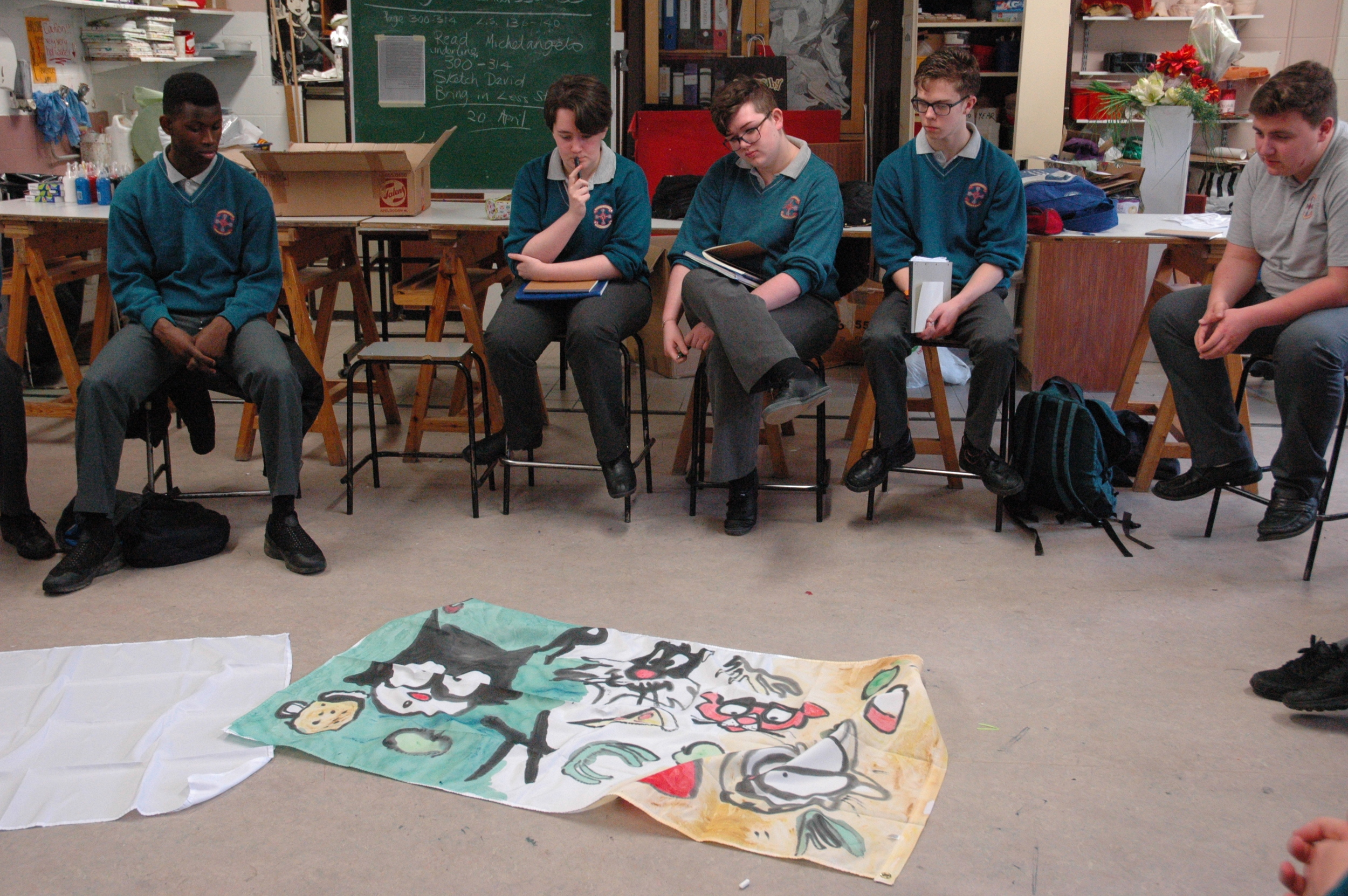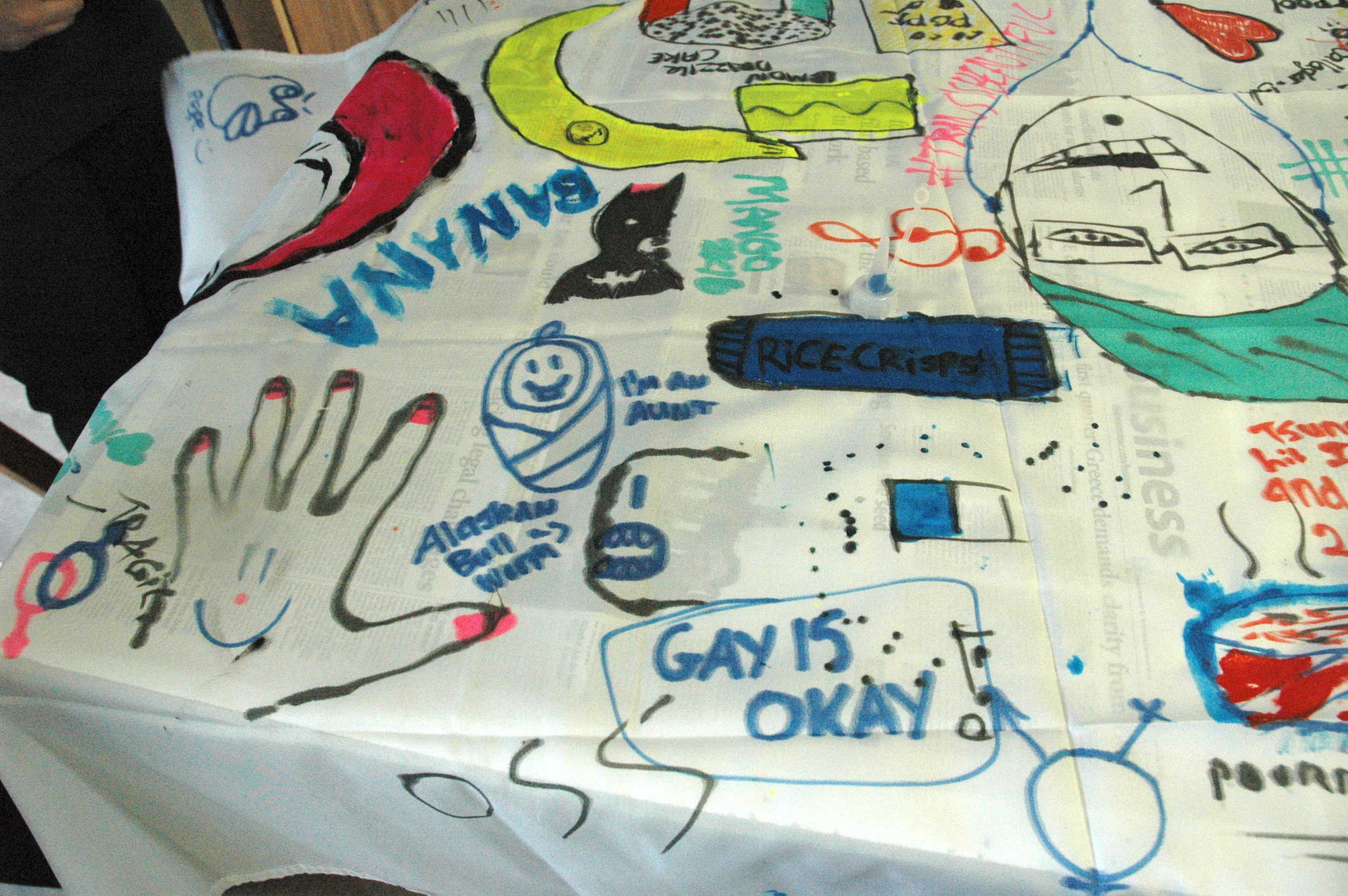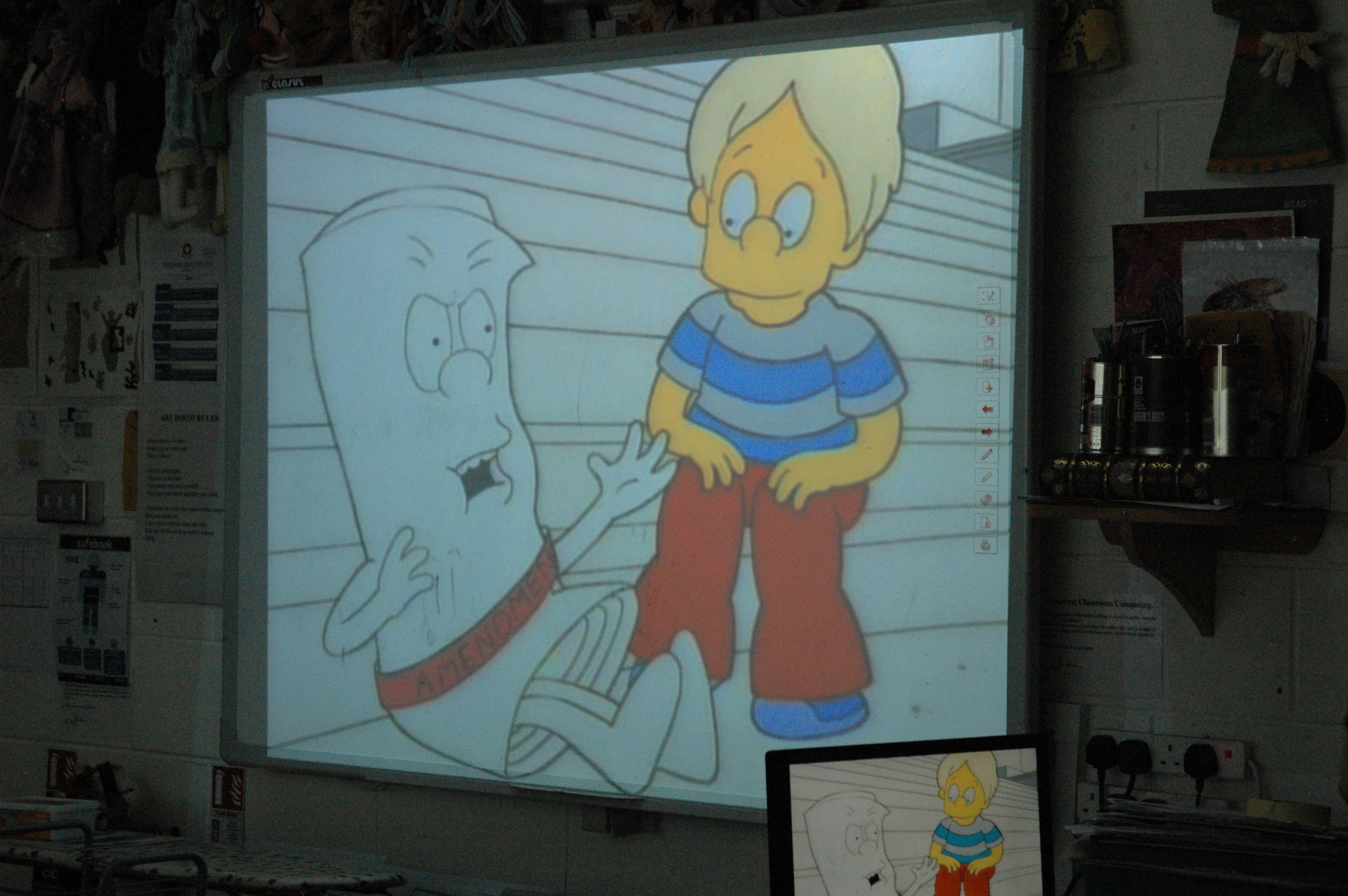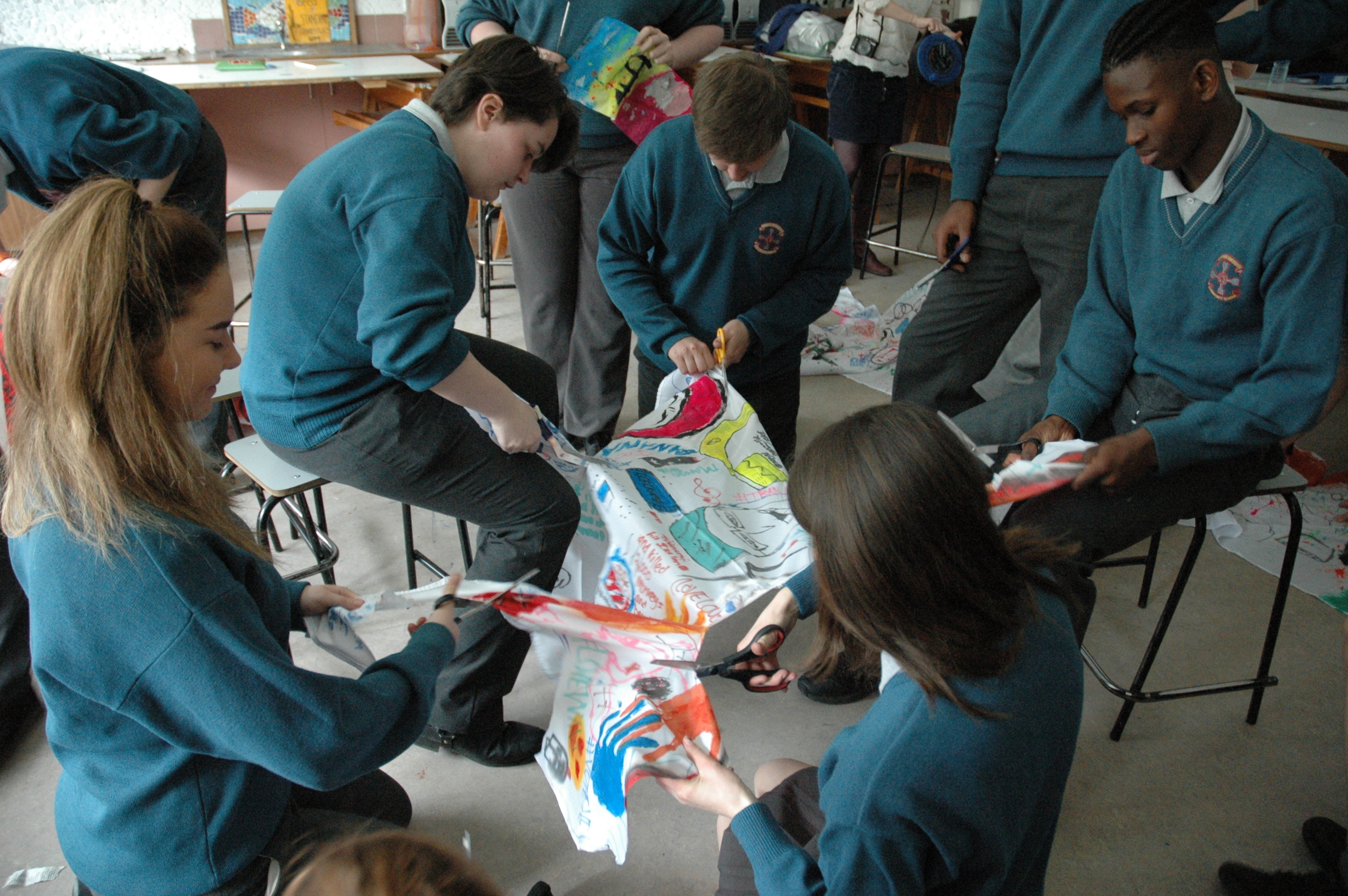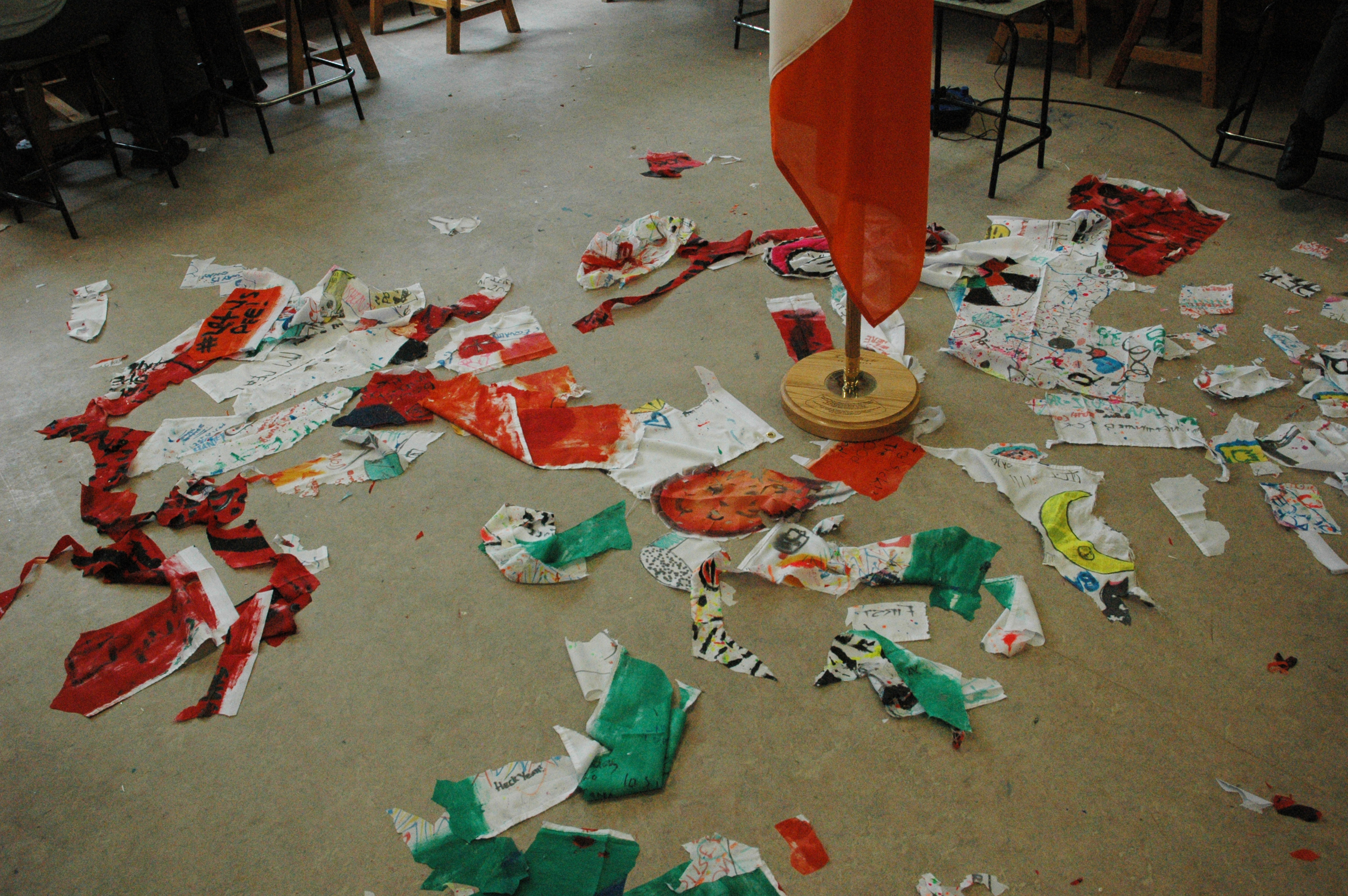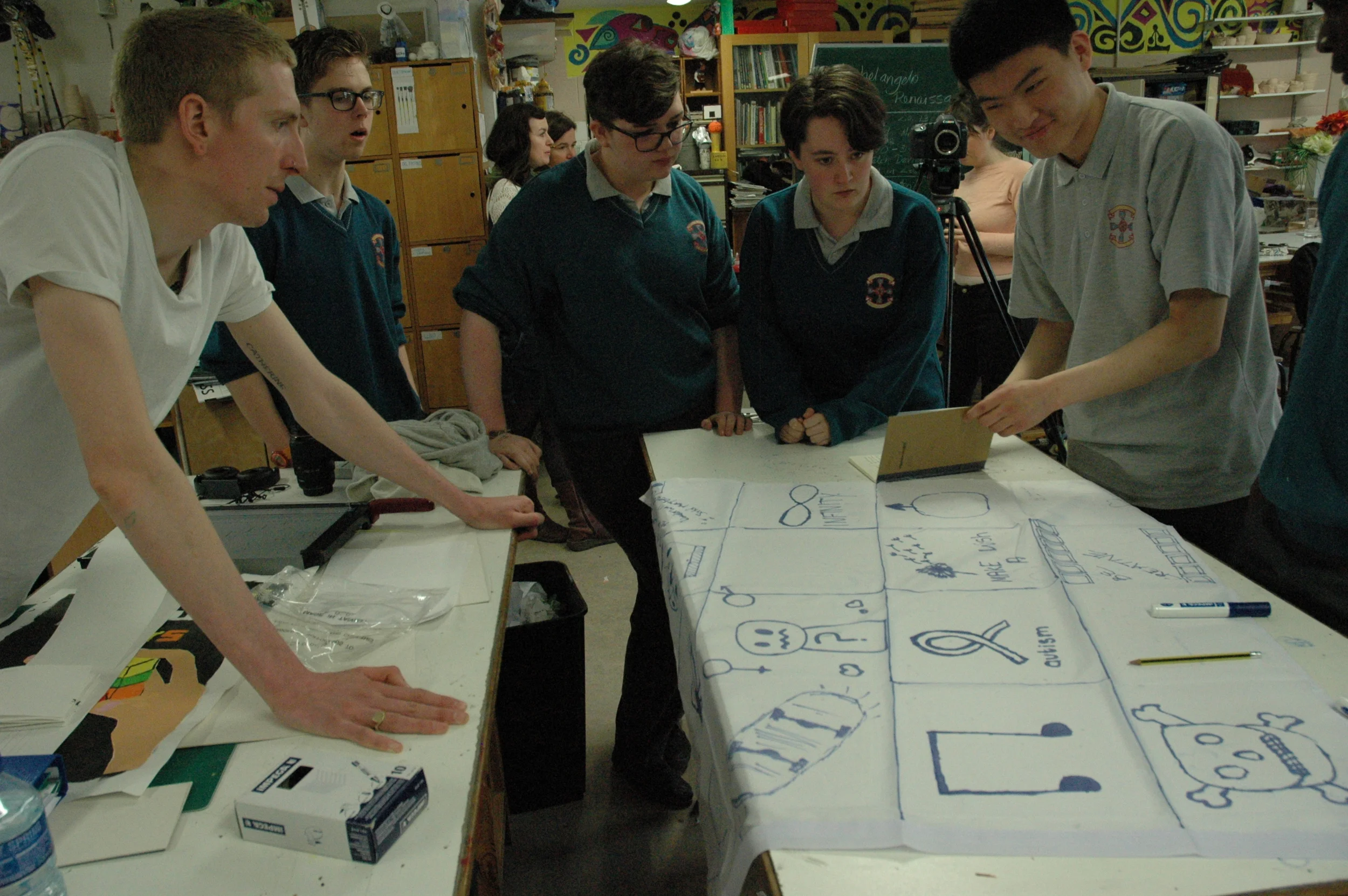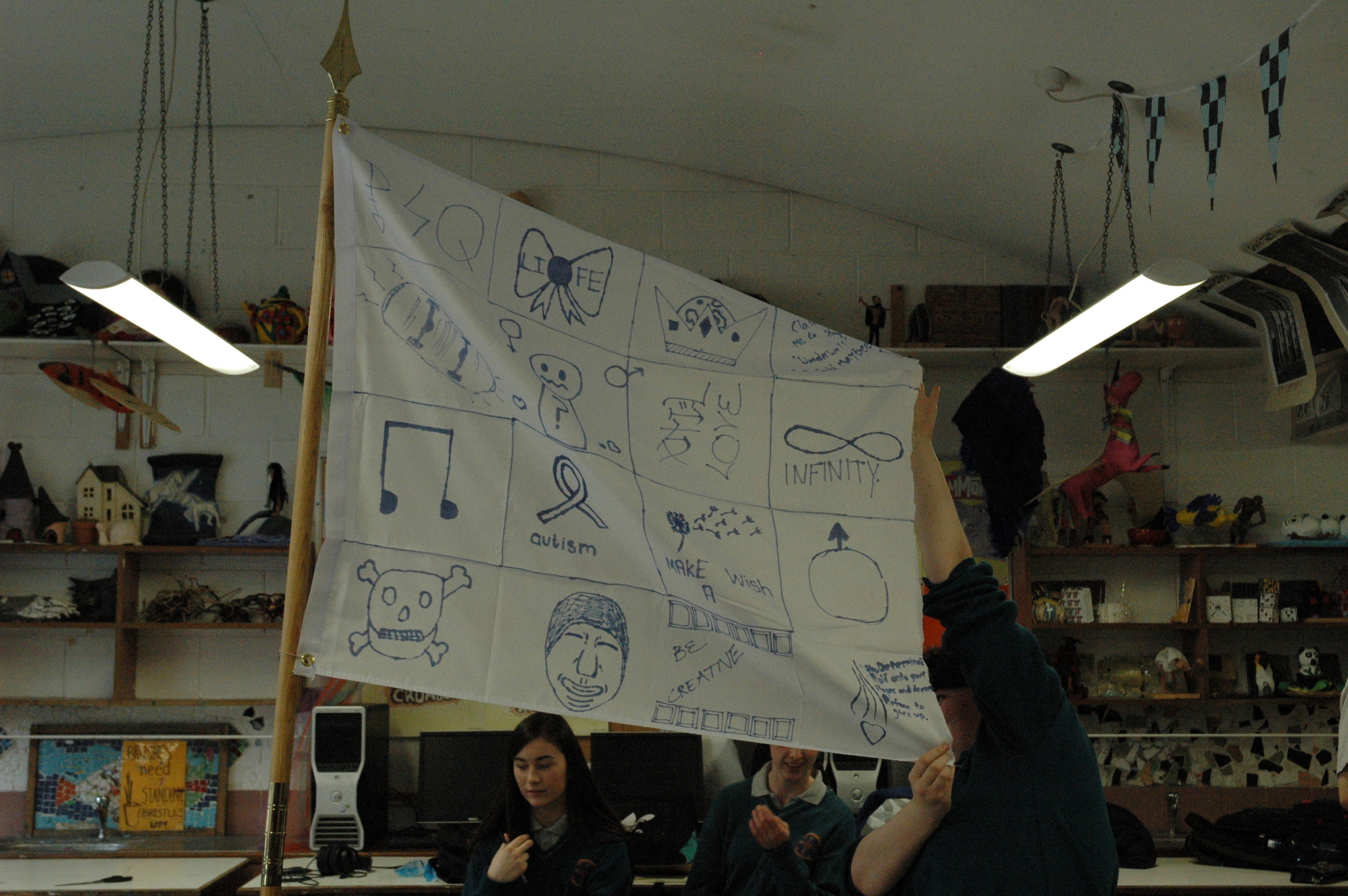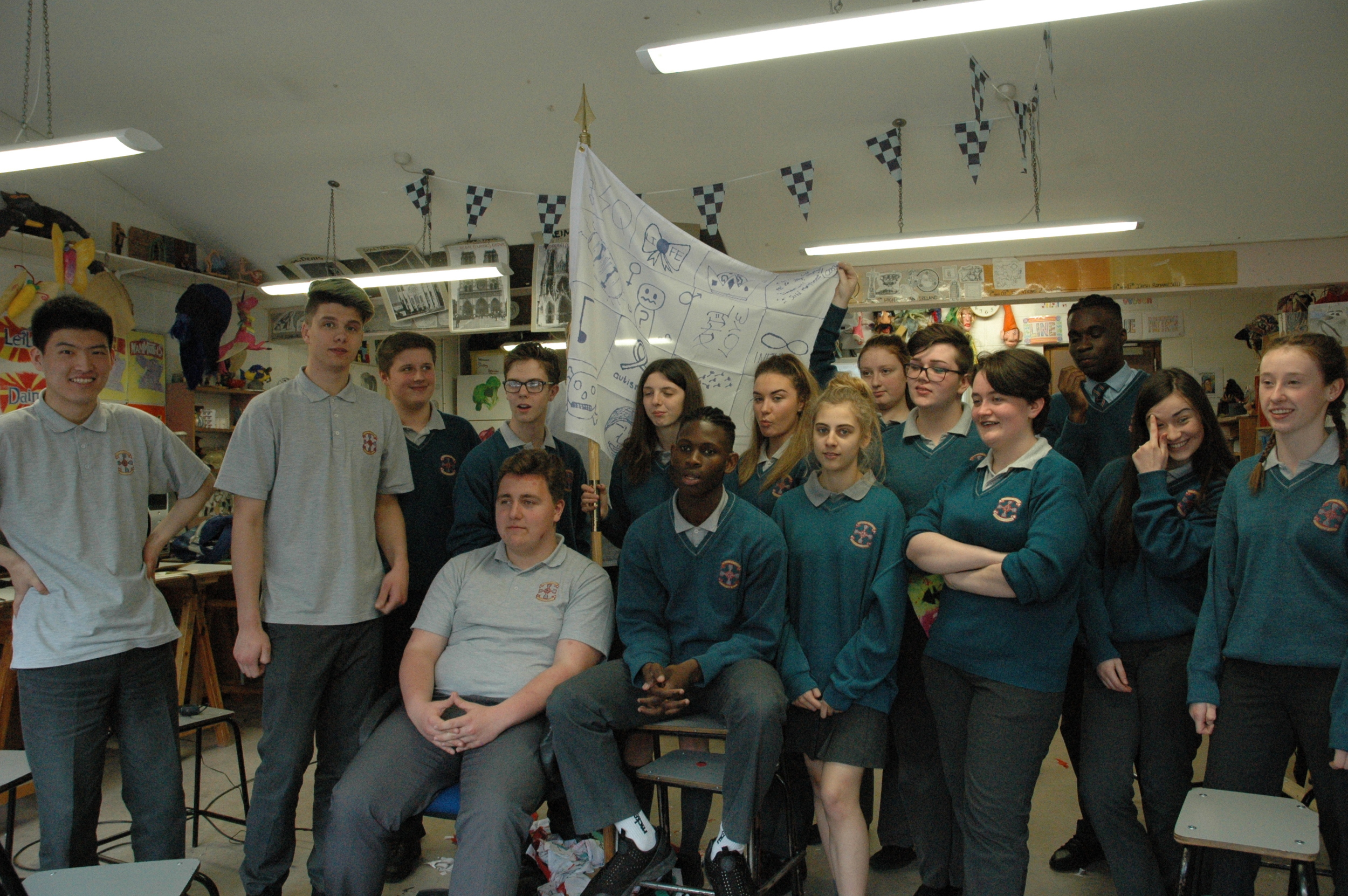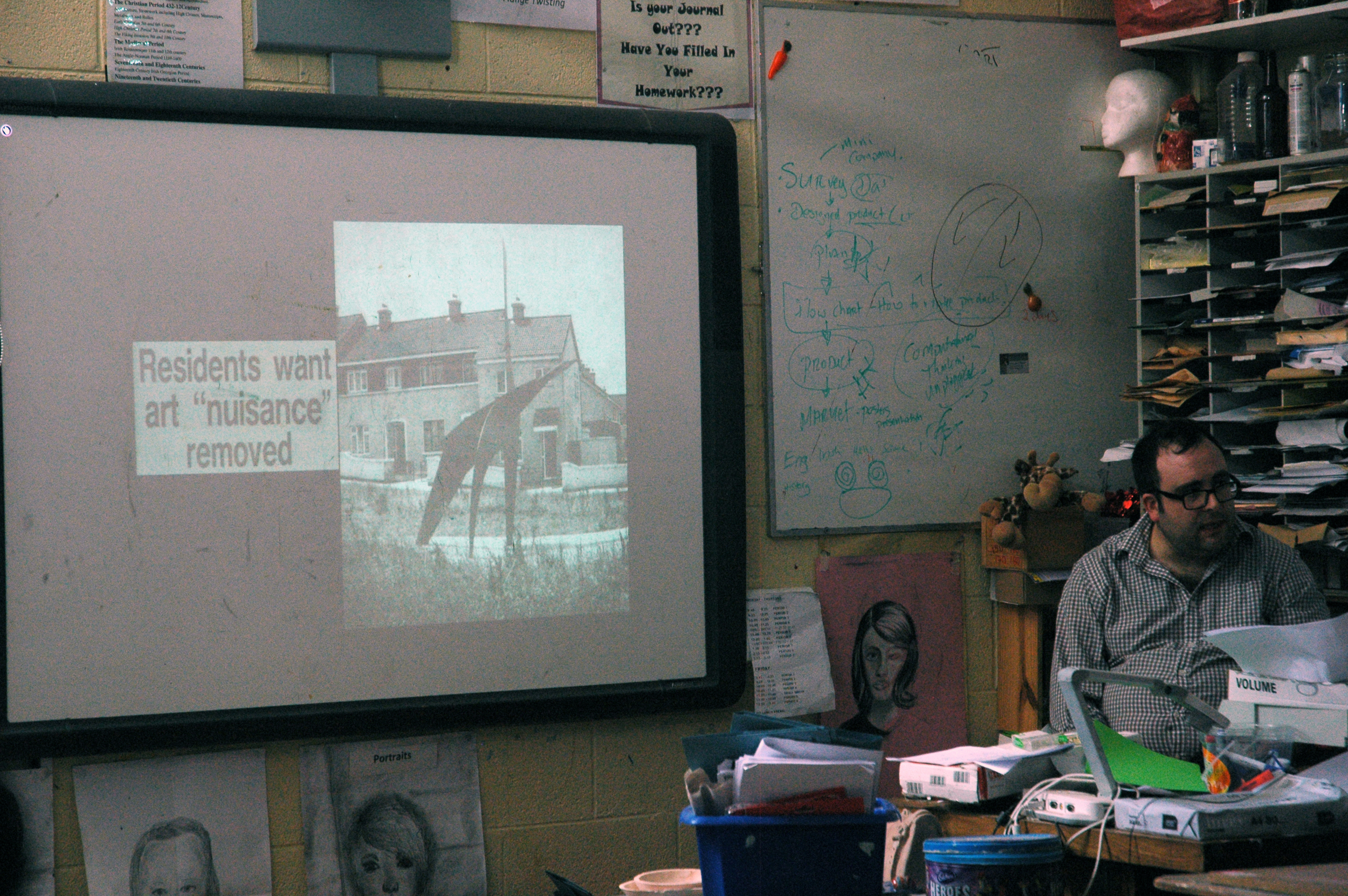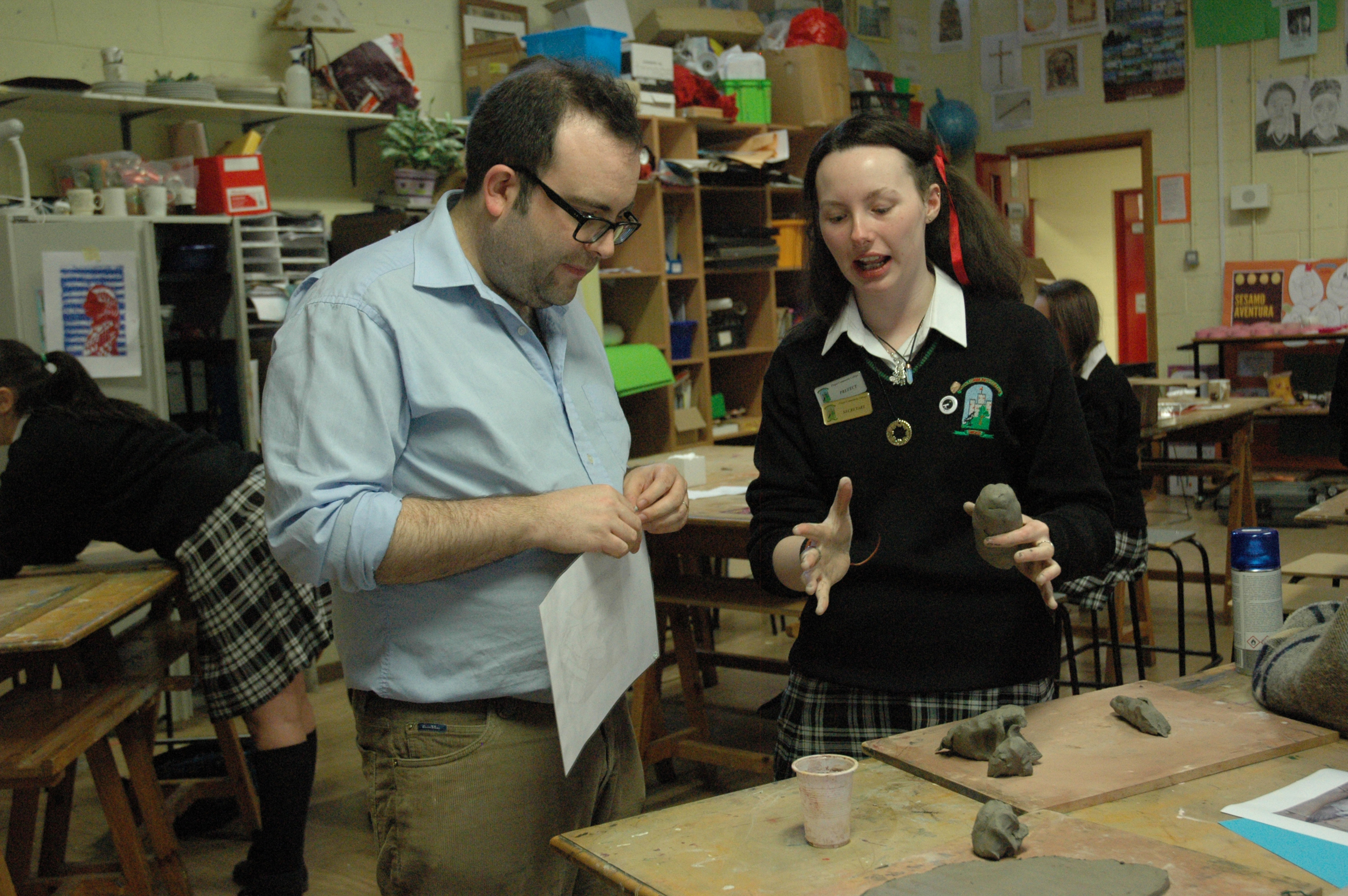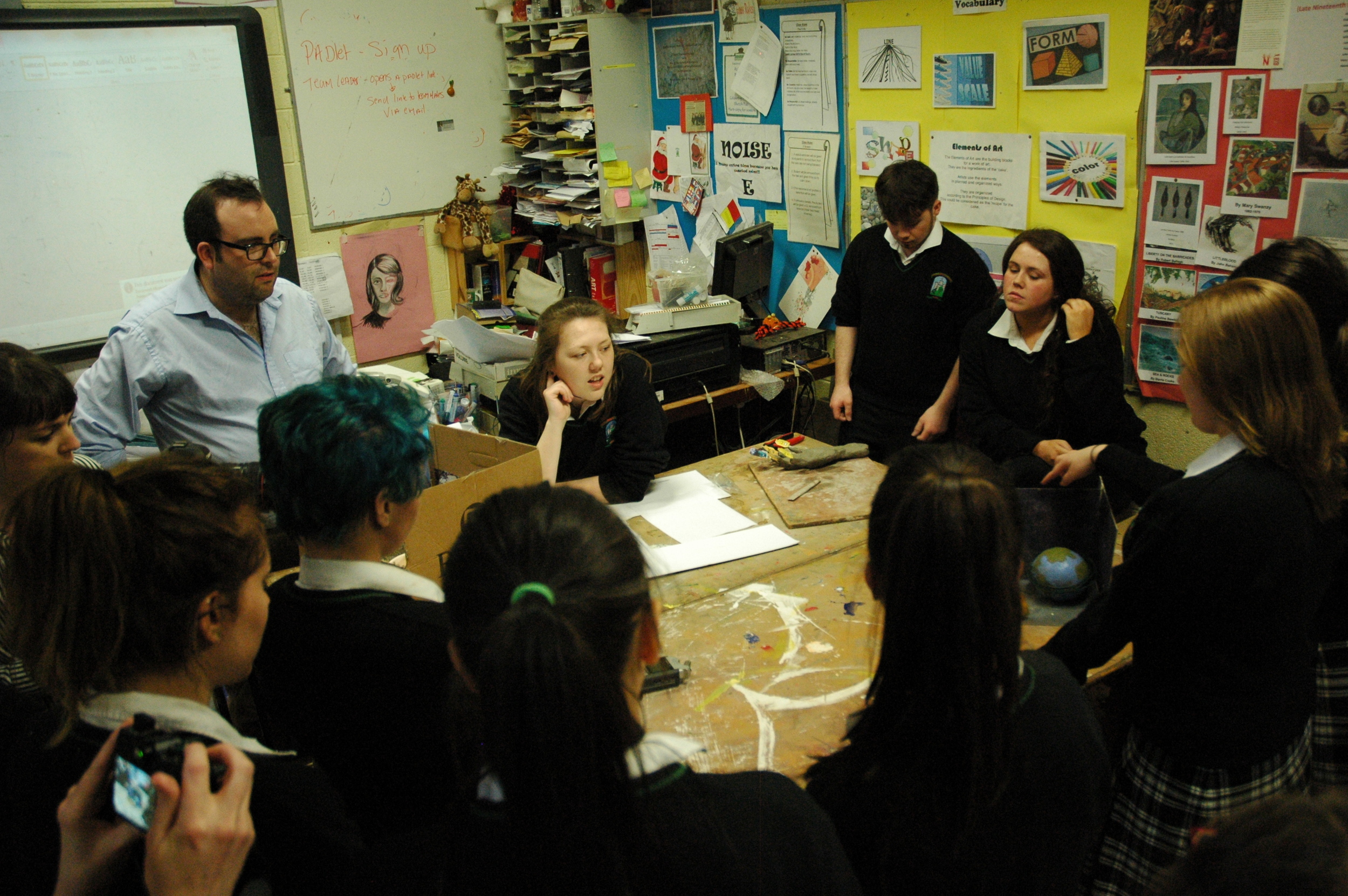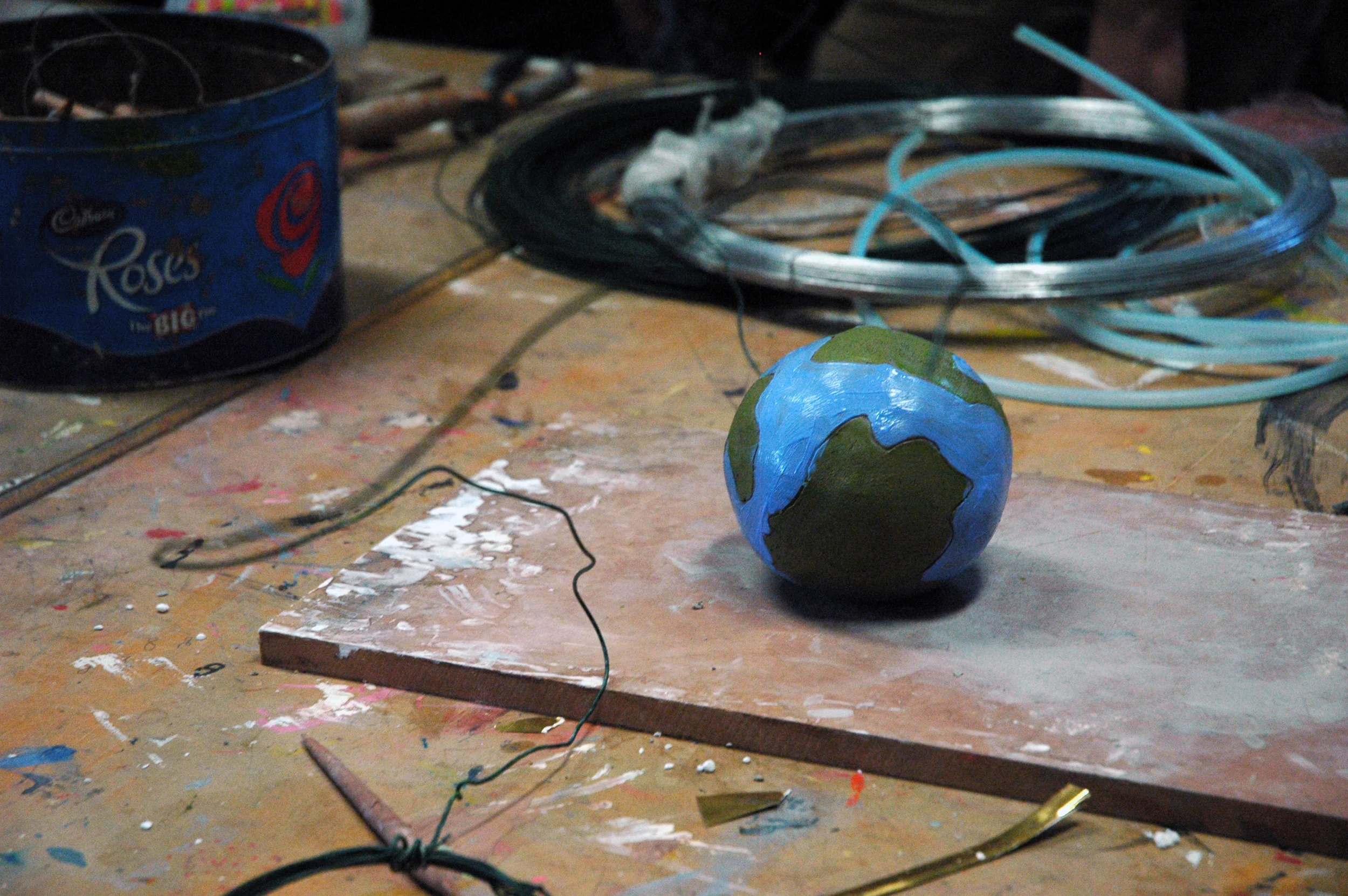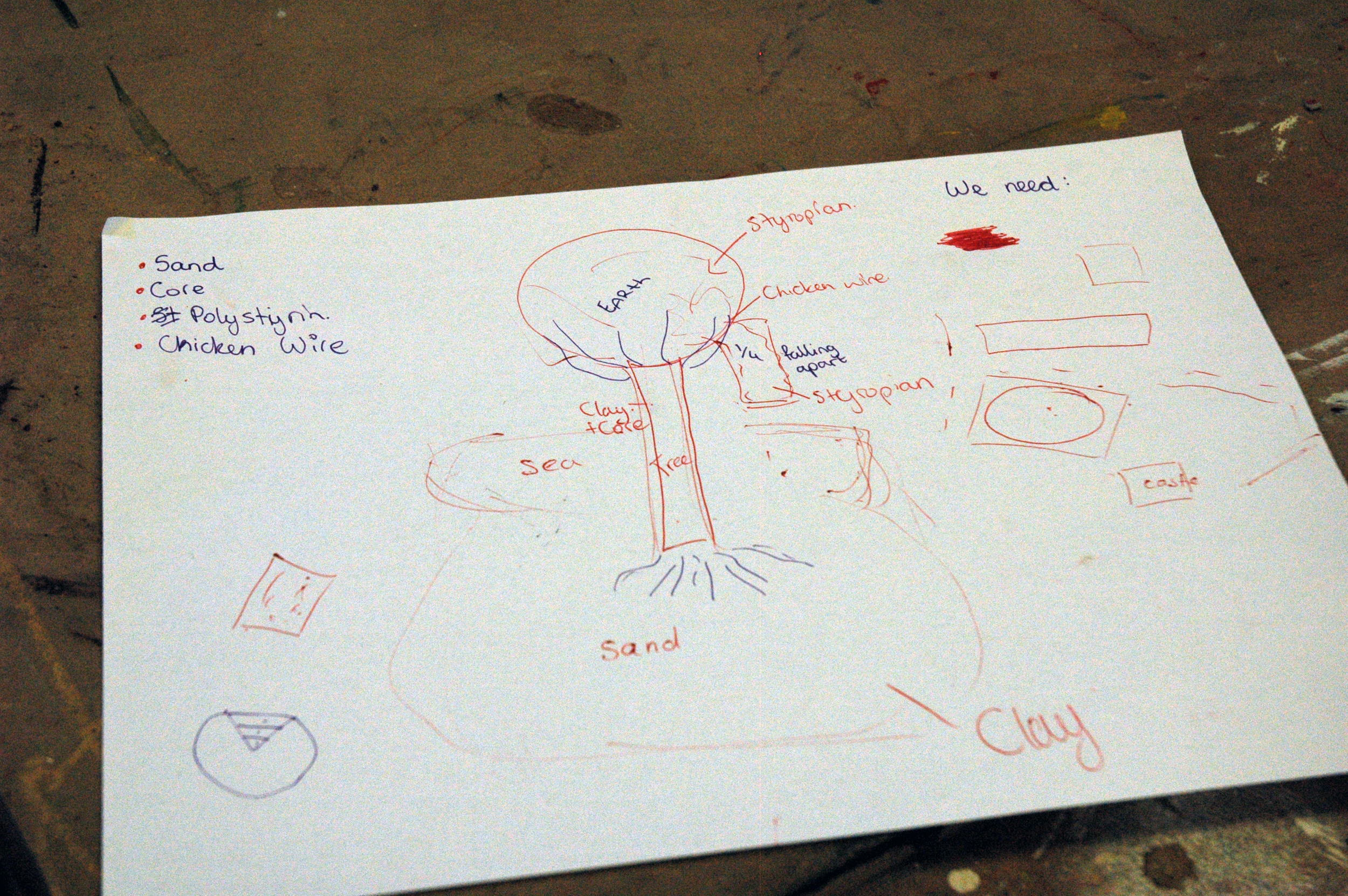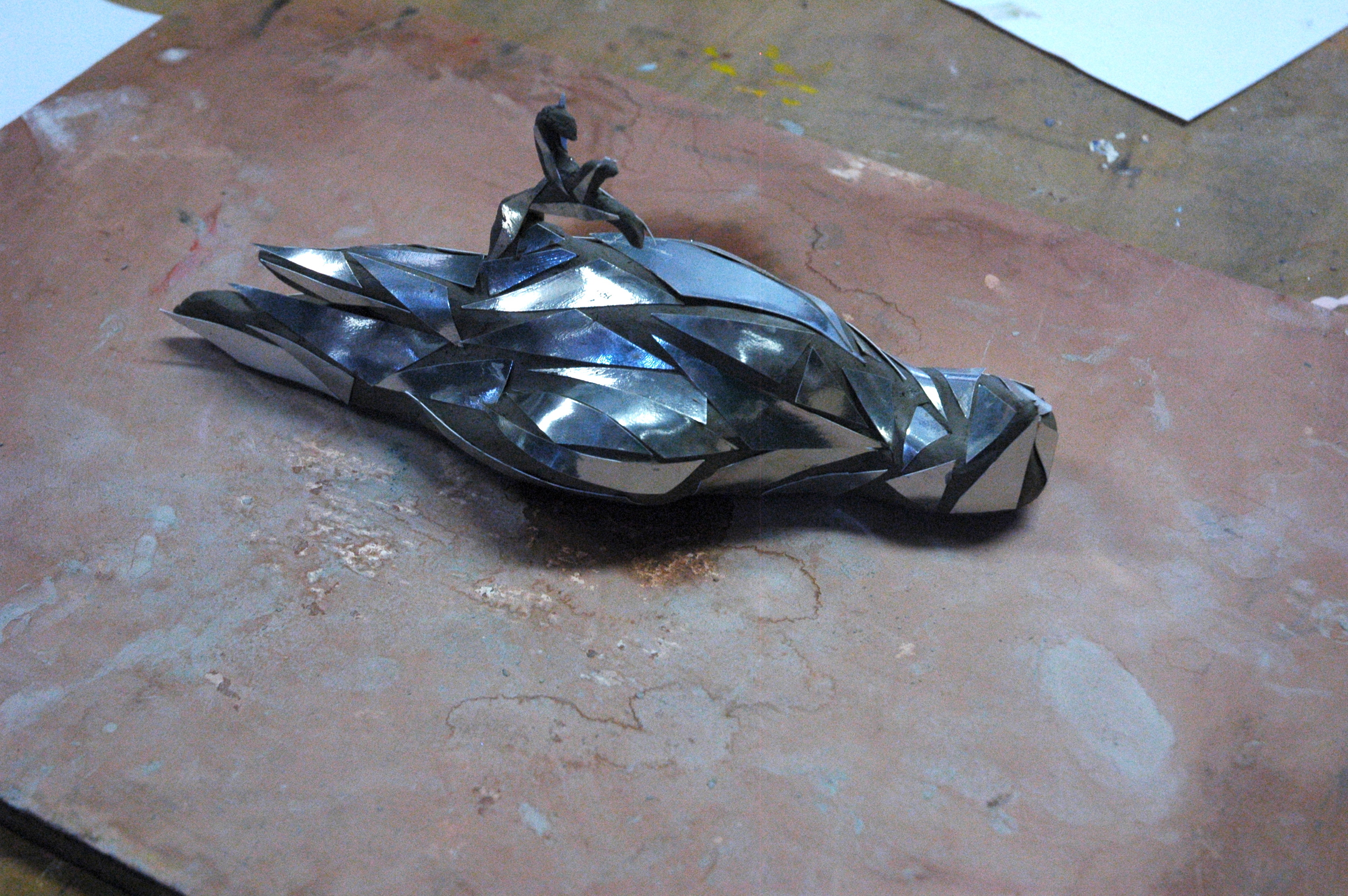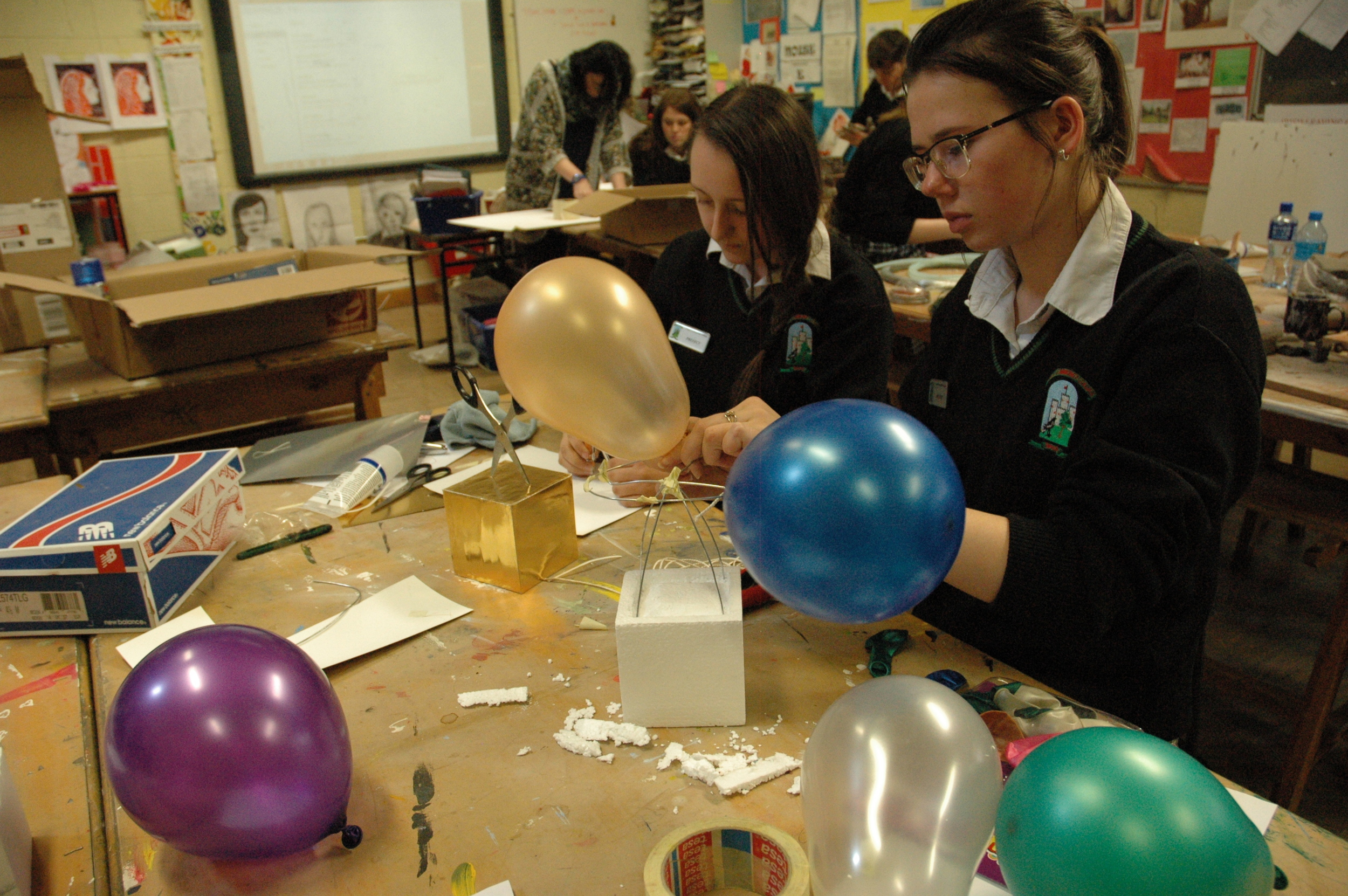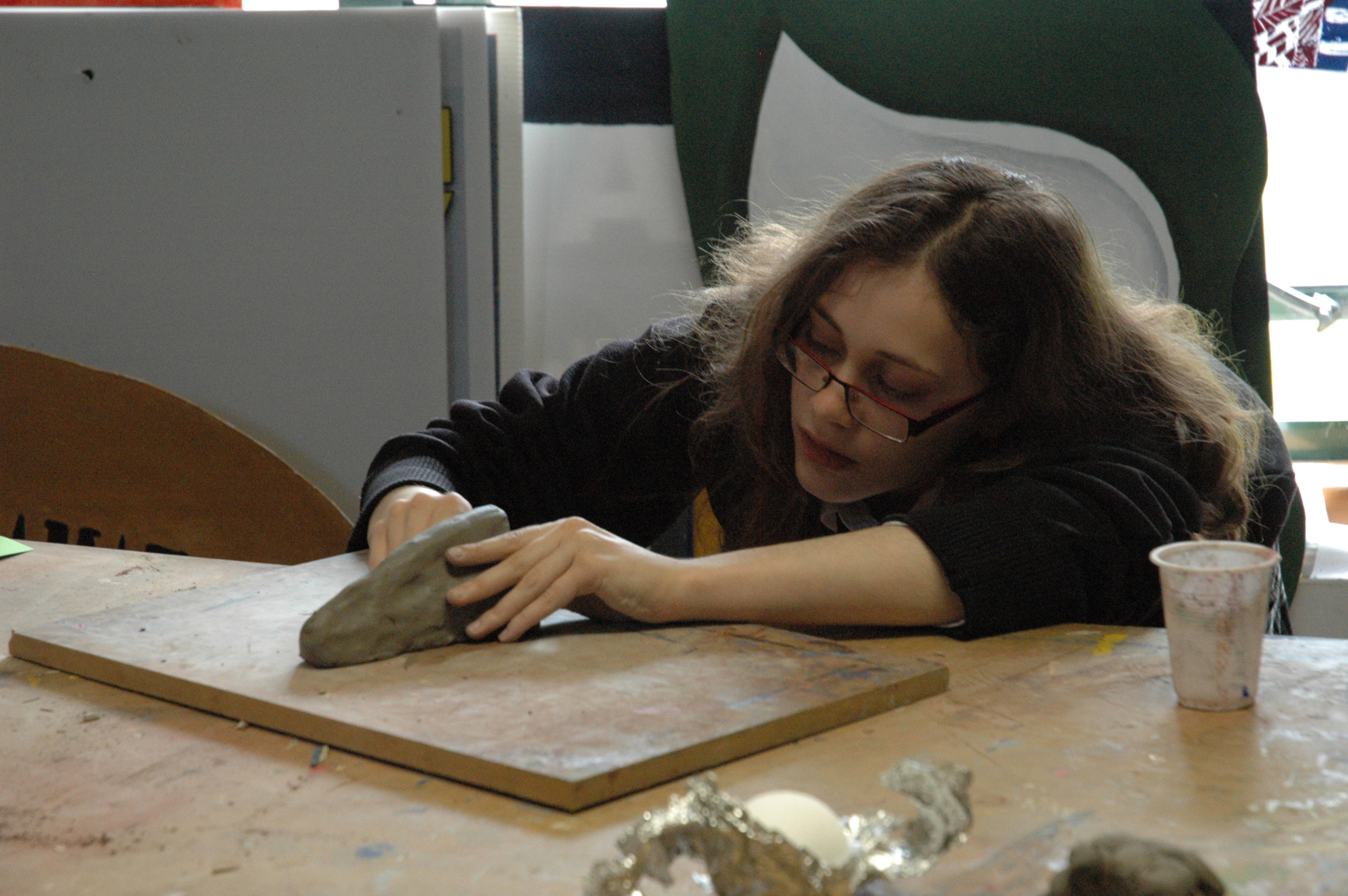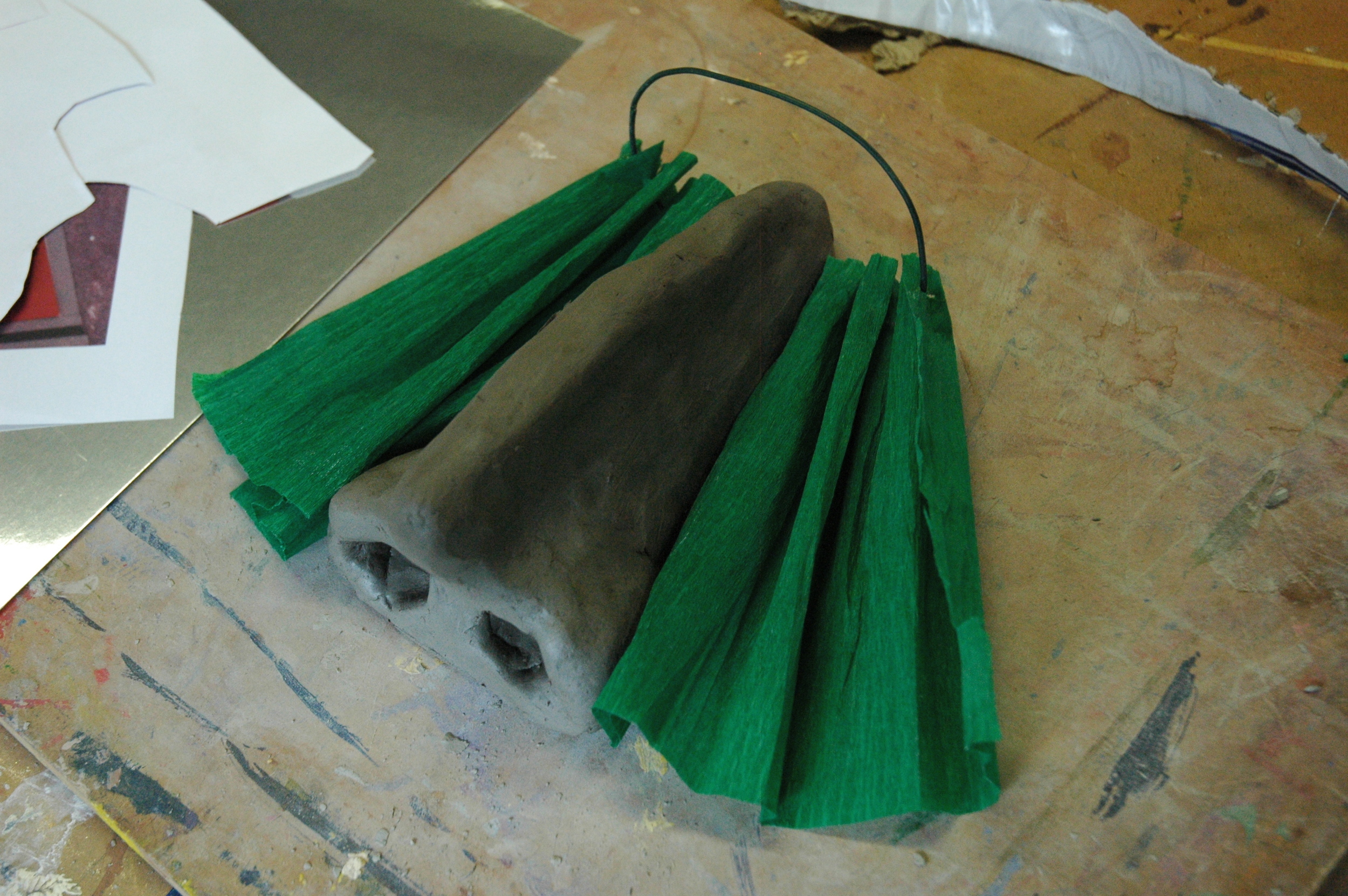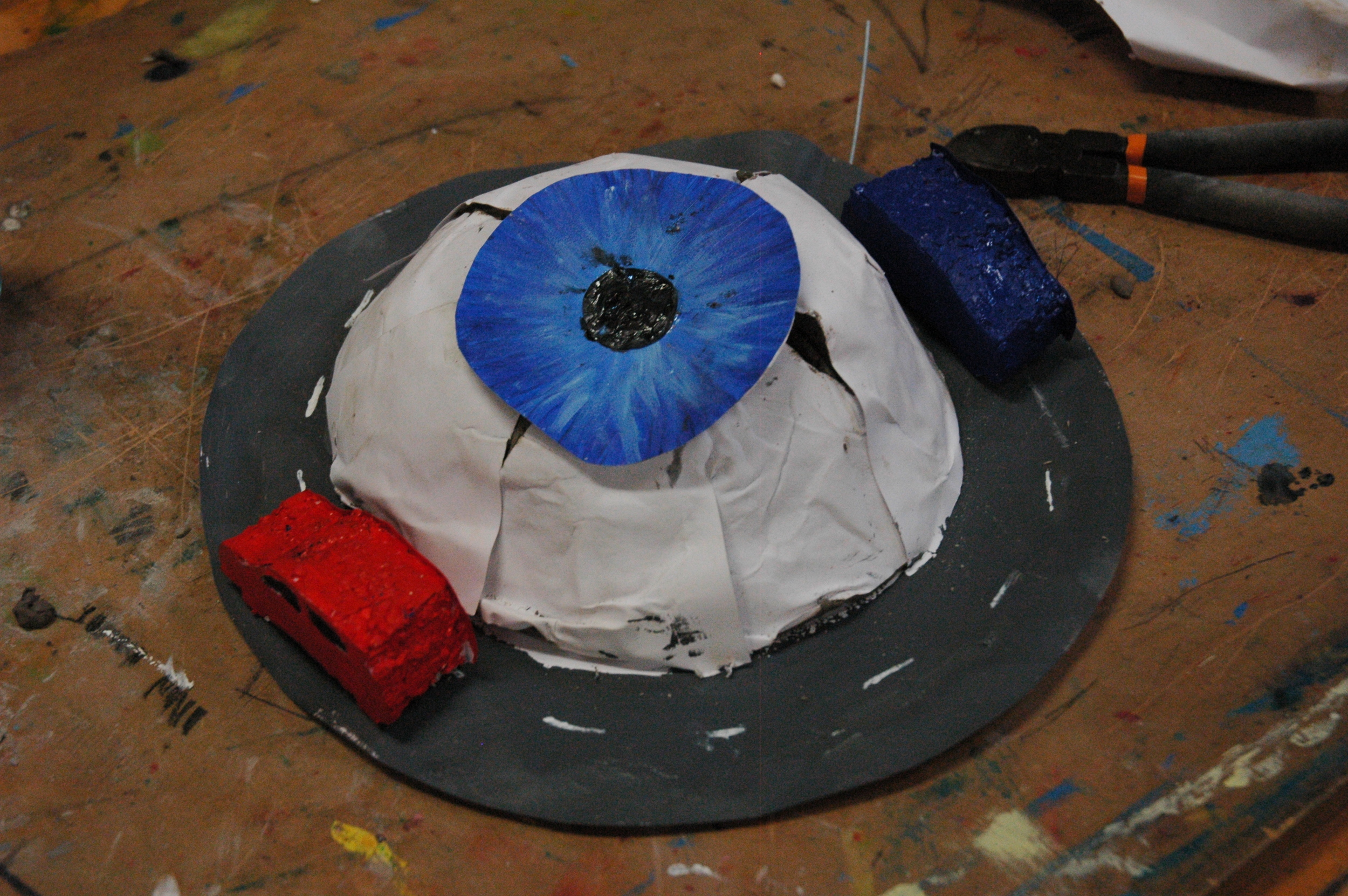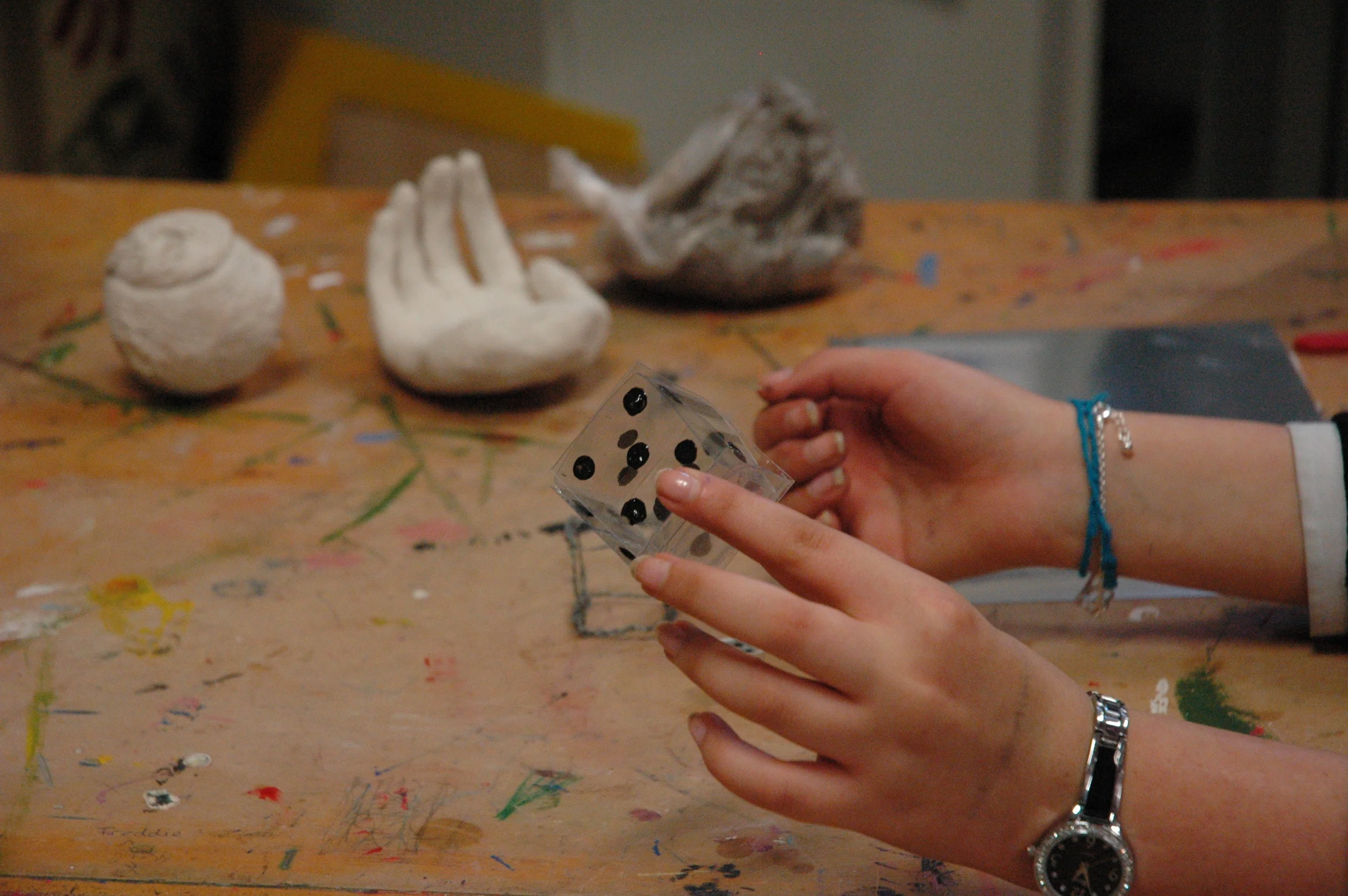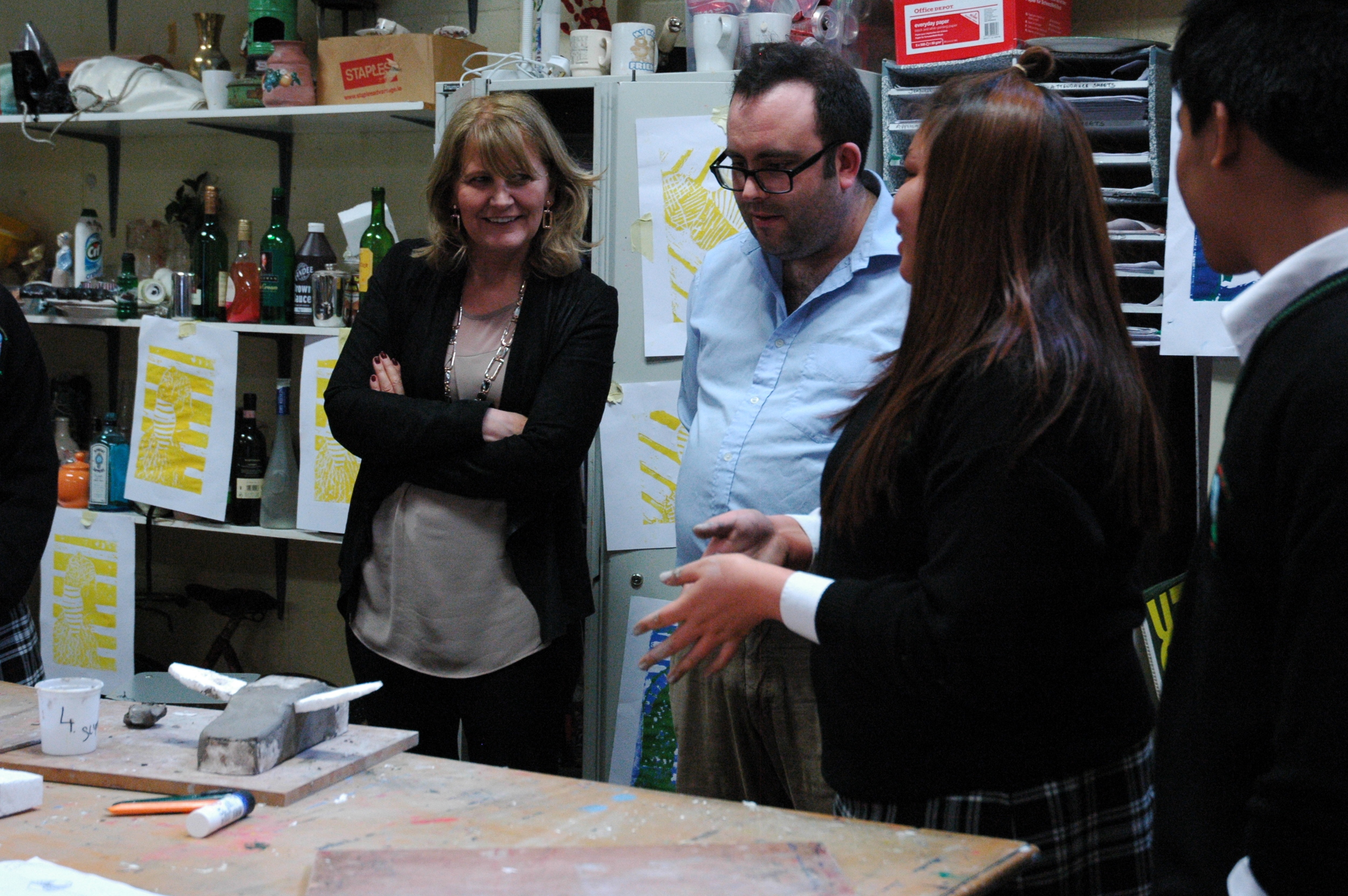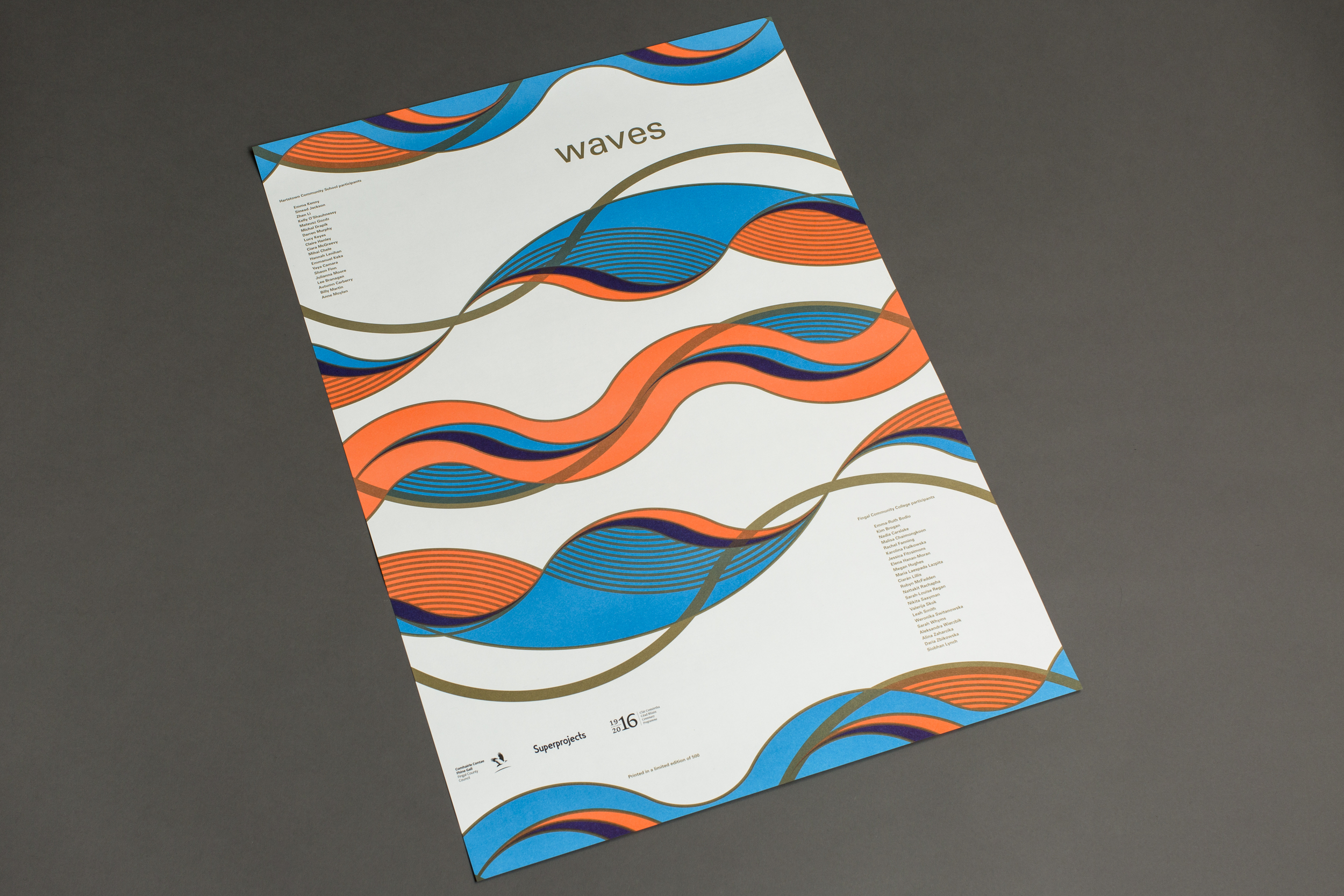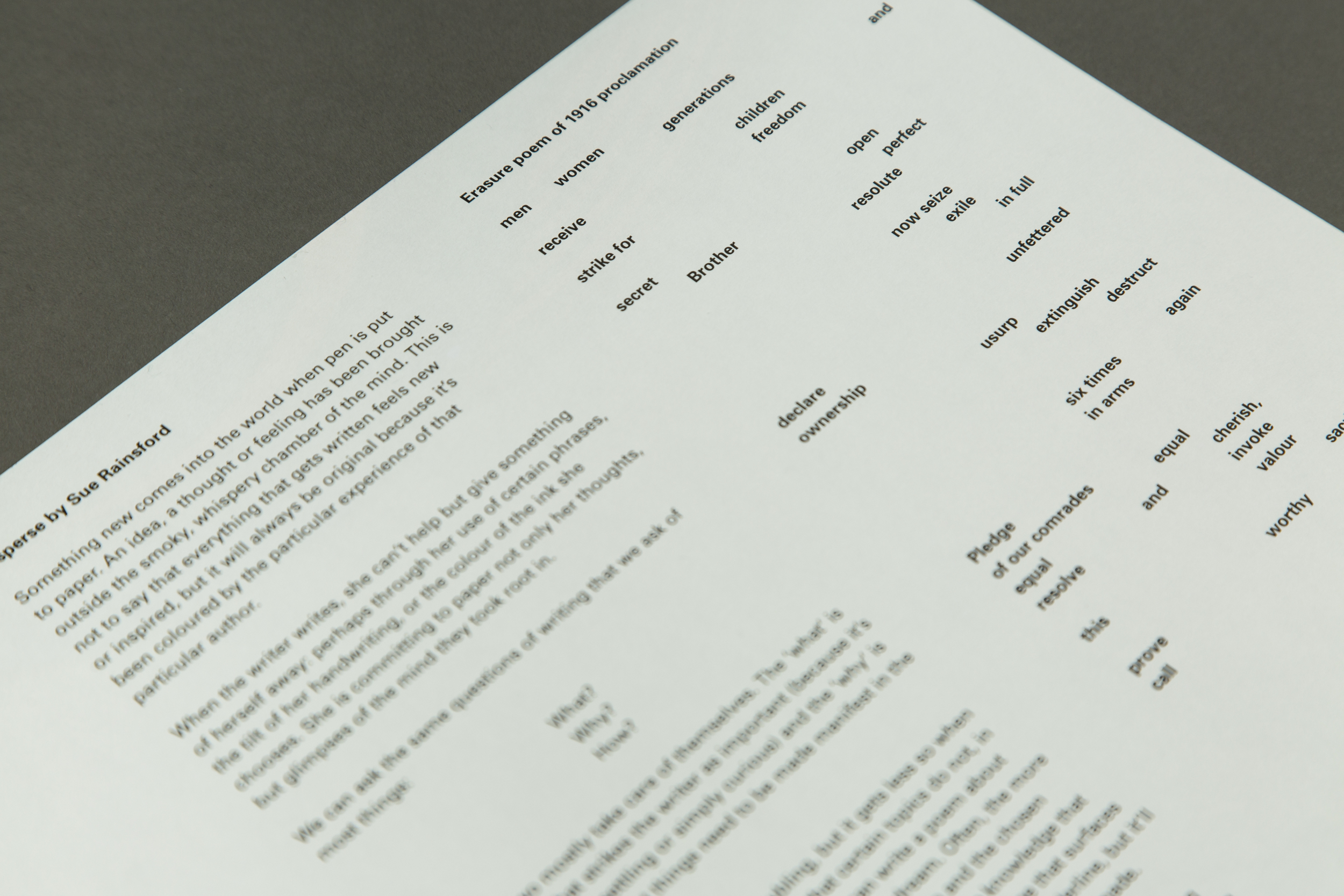Waves (March - May 2016) was an arts education initiative that connected young people, contemporary art and the political. It included a series of artist-led workshops, an associated film, and a text and design commission.
Artist-led workshops were with artists Sean Lynch, Clodagh Emoe, Ruth Lyons, Eoghan Ryan and students and teachers from secondary schools Fingal Community College and Hartstown Community School. In these workshops, the 1916 Rising centenary was used as a starting point to explore concepts such as political and cultural zeitgeist; commemoration; collective power; public art and provocation; humour as protest; personal identity; government and everyday life; time and energy; and representation and nationalism.
Videographer Jenny Brady was commissioned to create a film documenting the project - see below. Designer Distinctive Repetition and writer Sue Rainsford were also commissioned to produce a poster and text to respond to the project's themes, aimed at a teenage audience (see below).
A celebratory event took place for all students in Draoicht Arts Centre, Blanchardstown, Dublin 15 on 12th May. This event included the debut screening of Jenny Brady's film and the launch of Distinctive Repetition's poster and text by Sue Rainsford. Sue Rainsford read from her commissioned text 'disperse' at this event (see below).
A partnership programme with Fingal Arts Office, Waves was funded by Fingal County Council as part of the 1916 centenary programme.
Please see below for film by Jenny Brady.
.....
FILM
....
OTHER WORKSHOP DOCUMENTATION
Ruth Lyons
Essential Materials and Commemorative Objects
Fingal Community College, Swords, county Dublin
3rd and 10th March 2016
In Ruth Lyons' first of two workshops at Fingal Community College in Swords she began by inviting students to look at a selection of natural materials - oil, chalk, limestone and rock salt - all substances that human beings dig up from below the earth for our own uses. She spoke of how these (usually) hidden materials shape our society. She said that until recently, and for a long time, salt was the most precious and traded commodity on the earth. Referring to oil and coffee beans as the first and second most traded materials in our contemporary world she asked the students what they thought these two things might have in common. She then spoke of their mutual relationship to energy and acceleration. She told further tales of subterranean substances, ancient trading and a 230 million year old sea (The Zechstein sea). She spoke about some of her work including her current long-term project working with the EUsalt Association and eight of the salt mines across Europe who mine the rock salt left over from this ancient sea to create a series of 'salt bowls': each series a different colour due to the differing mineral content of the earth in each location (in Poland white, in England brown...).
Following Ruth's stimulating and expansive talk, she invited the students to consider what material they would like to commemorate. What materials did they use in everyday life, and what materials that we use today might people in 100 years time view as interesting? What material would they like to be part of a personal commemorative object? Could it be cotton, paper or maybe the root of paper - timber? In the practical part of her two workshops students created a silicone mould and a resin. Using the mould and the resin they cast their choice of materials to create a commemorative object.
....
Clodagh Emoe
People Power
Hartstown Community School, Hartstown, Dublin 15
1st and 8th March 2016
Clodagh Emoe's first workshop in Hartstown Community school began with a brilliant talk that covered a selected history of the collective in art and politics. It touched on The French Revolution (liberté, égalité, fraternité), The Situationists and their rejection of consumer culture through gesture and action in public space, The Proclamation - its typography and the performance of it being read aloud by Padraig Pearse (or was it Tom Clarke?), the 1965 Selma march and the poetic language used by Martin Luther King in his famous speech. Clodagh also spoke of how she became aware of the anti-apartheid movement in the 1980s through both music (The Specials' 'Free Nelson Mandela' and United Artists Against Apartheid's 'Sun City') and her own parents refusal to buy from Dunnes Stores as a show of solidarity with the striking workers protesting against the sale of South African produce - and how the actions of these workers touched the imprisoned Nelson Mandela in South Africa. Finally, she spoke about the Guerilla Girls and their artistic actions against the gender inequality of the artworld. All these edifying stories of creativity and people power provided the platform for the next part of the workshop where the students discussed what societal issue they would like to collectively address. Students shared thoughts on lack of provisions for disaffected youth, abortion laws, poor hospital service, and the rising costs of 'free' education. Using a secret ballot they voted to choose one of these issues to address in the creation of a piece of collaborative artwork - they chose hospital service.
In the second workshop students demonstrated admirable creativity in preparing and enacting a performance within two hours. To help set the tone, Clodagh showed them clips of comedy skits from The Savage Eye and The Singing Detective. Students and Clodagh used story-boarding, musical composition, choreography, special effects, prop-building and performance to create an impressive drama. Working collaboratively they successfully expressed their collective dissatisfaction and concern over this societal issue.
....
Eoghan Ryan
Our flag deflated?
Hartstown Community School, Hartstown, Dublin 15
15th and 18th April 2016
In Eoghan Ryan’s workshops students were invited to consider the relationship between flags and representation; with a particular focus on personal beliefs, the everyday and the contemporary moment. Involved, in-depth and challenging discussion was combined with collaborative flag-making (and destruction) to allow students to deconstruct possible meanings of flags and to think out and express what was important to them.
In their first creative collaboration students made a number of flags referencing things such as current news items, things of significance to them, symbols that represented them and what they had for breakfast. The flags contained a myriad of expressions, from the mundane to the idealistic. These were discussed, as was the overarching political position expressed on the flags.
Following this, Eoghan invited the students to explore the symbolism of flag destruction by cutting up their flags. They discussed how this felt and how this act would compare to cutting up an official flag. Finally, they collectively created a unique flag that contained symbols created by each of the students. The big abstract ideals of national flags were juxtaposed with the flags created by the group - as things that resonated with meanings distinctive of a given group of people in a given time and place.
Throughout the workshops the students rose to the challenge of enquiring into the relevance of this aspect of material culture to their lives, responding with keen debate and joyful self-expression.
....
Sean Lynch
How Art Behaves
Fingal Community College, Swords, county Dublin
20th and 21st April 2016
Sean Lynch’s workshops at Fingal Community College, Swords, involved considering how public art ‘works’ in terms of the spaces we communally share and how we encounter these artworks in our contemporary world. Looking at the many different types of artistic methodologies that have emerged since 1916, Sean took the students on a brief (virtual) tour of artworks by artists such as SITE, Paul Gregg, Joseph Beuys, John Burke, Francis Alys, Marta Minujin, Paddy Bloomer and Nicholas Keogh, as well as his own work. He used these works to present students with ideas around ‘how art behaves’ in our public world, and how art sometimes gets into situations where there is 'a bit of devilment involved’. Sean highlighted the conversations and debate that are sometimes provoked by such artworks.
Asking the group to embrace this sense of ‘devilment’ he gave them each the task of developing a proposal for a piece of public art. He asked them to think about everyday objects and how they would change if they were made into pieces of public art. He asked them to think of the strangest place they knew and what piece of public art they would put there - prompting them to think about the role of ‘place’ in the making of a public artwork.
Using a combination of drawing, clay and construction the students each constructed a model that they used to present their idea to the rest of the class. The ideas presented were a strong and diverse combination of the surreal, socially aware, humorous and touching.
....
TEXT 'DISPERSE' BY SUE RAINSFORD
In this clip Sue Rainsford reads from her commissioned text 'Disperse' at celebratory event and film screening in Draiocht Art Centre, Blanchardstown on 12/06/16. In her text Sue Rainsford comments on methods of formal experimentation in writing, on the act of writing as a way of engaging with public life, and more.
Read full text here.
....
POSTER BY DISTINCTIVE REPETITION
This graphic poster publication also contained the commissioned text 'Disperse' by Sue Rainsford. Image copyright Distinctive Repetition.
....
STUDENT FEEDBACK
'I especially enjoyed learning about the work the artists had already completed. I loved making the items and it really allowed me to use my full creativity and imagination. I am much more observant now.... Art is a broad topic and I can't wait to learn more about it.'
- Student, 17
'After the workshops, I feel a lot more comfortable with my art form. I like how I can draw, paint or use any form of medium to talk about what I want, how I want, and when I want. The workshops helped me feel at ease with my art. A picture can show a thousand words, I can see what that means now.'
- Student, 15
'I really enjoyed being able to voice my opinions on issues such as inequality etc. I really enjoyed learning about the apartheid and other monumental issues in history that have helped shape the world today'
- Student, 16
'I really enjoyed our discussions in Eoghan Ryan's workshop. We talked about flags and symbolism and I was never made to feel as though my opinions weren't important'
- Student, 16
'We were able to explore something new, which is not in the Leaving Cert programme. We learned many new things from the artists, even that art can be in any shape of form, as shown by different examples in the slideshow. I really liked using the resin and seeing how everyone's 'memento' turned out.'
- Student, 16
'I really liked taking part in the workshops. I liked learning from people who were actually artists by profession. I liked that we could do whatever we wanted to do without confines - because even though that's what art is all about we don't get to do that in school.'
- Student, 17
'I learned many interesting facts, for example, that art doesn't have to be big or magnificent....My favourite moment was when Sean allowed us to make sculpture from anything or of something strange'
- Student, 17
'I can see now that all art has a meaning to the artist in a very special way, and that we all interpret art in many ways. It has made me appreciate all types of art even if they all don't appeal to me'
- Student, 16
....

